Category: Linen Frock Coat
Piecing the Skirt
Before we sew the skirt darts closed, it’s best to attach the triangular piece to the main skirt while everything is flat.
Lay out the skirt as shown, wrong sides up. The seam on the triangular piece is much longer, but don’t worry, that’s exactly what we want.
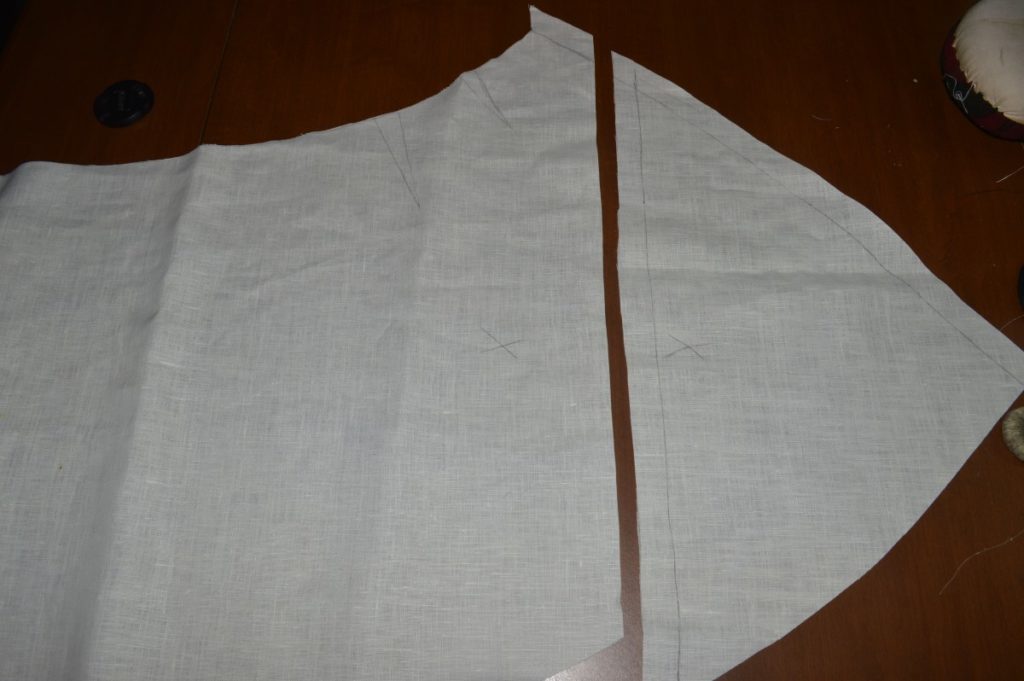
Place the right sides together, allowing the triangular piece to extend 1/2″ on either end.
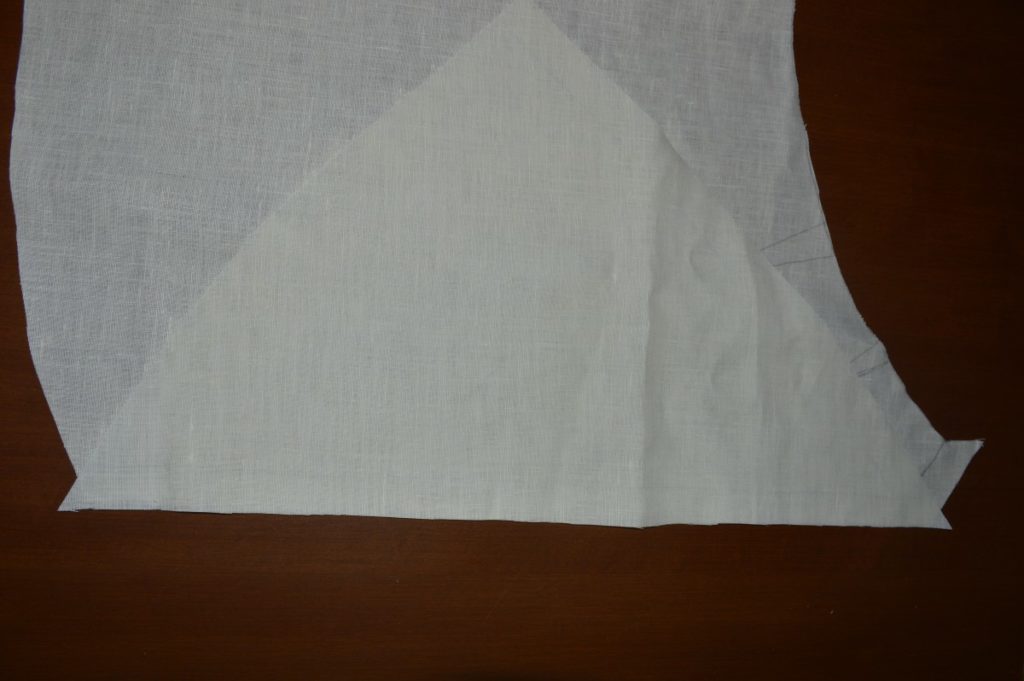
You can see how the triangular piece overlaps by 1/2″ at the bottom.
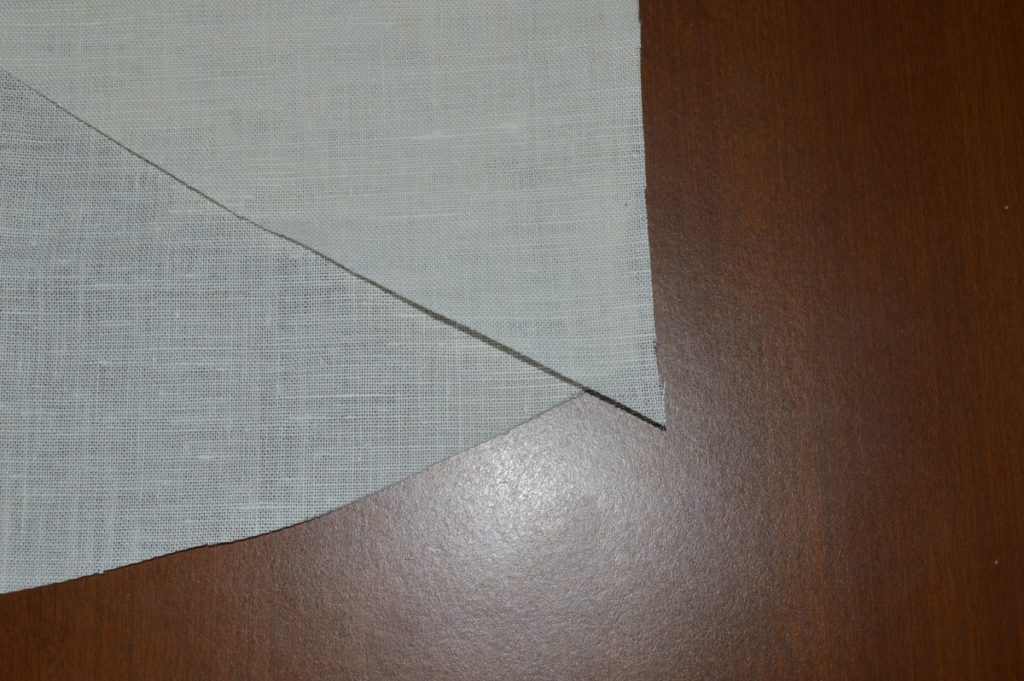
And at the top.
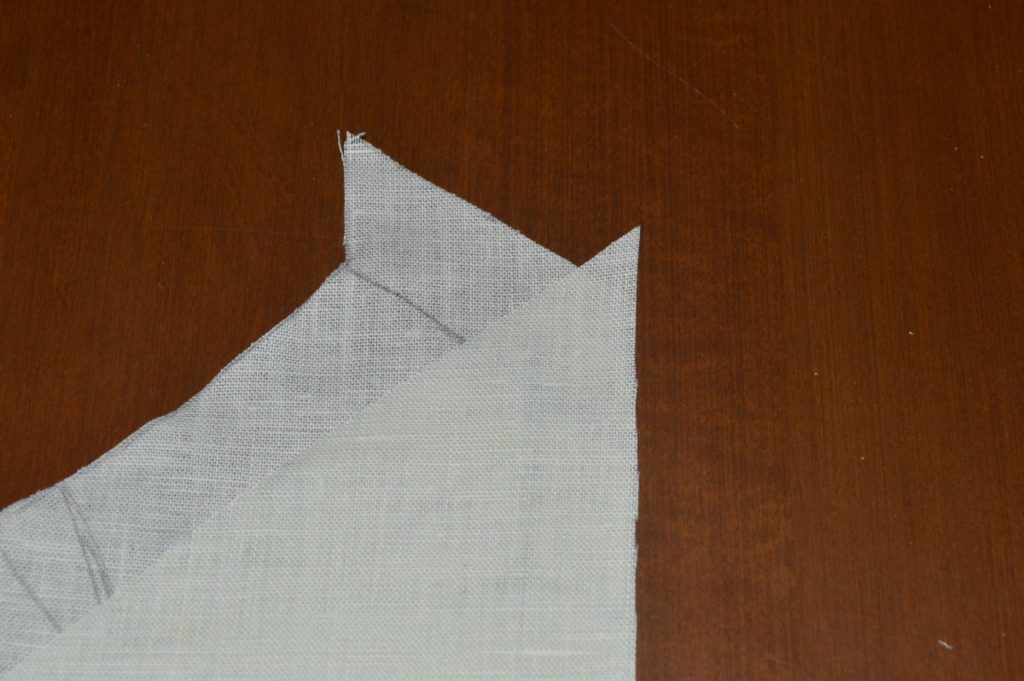
Baste the two pieces together, carefully, about 5/8″ from the edge.
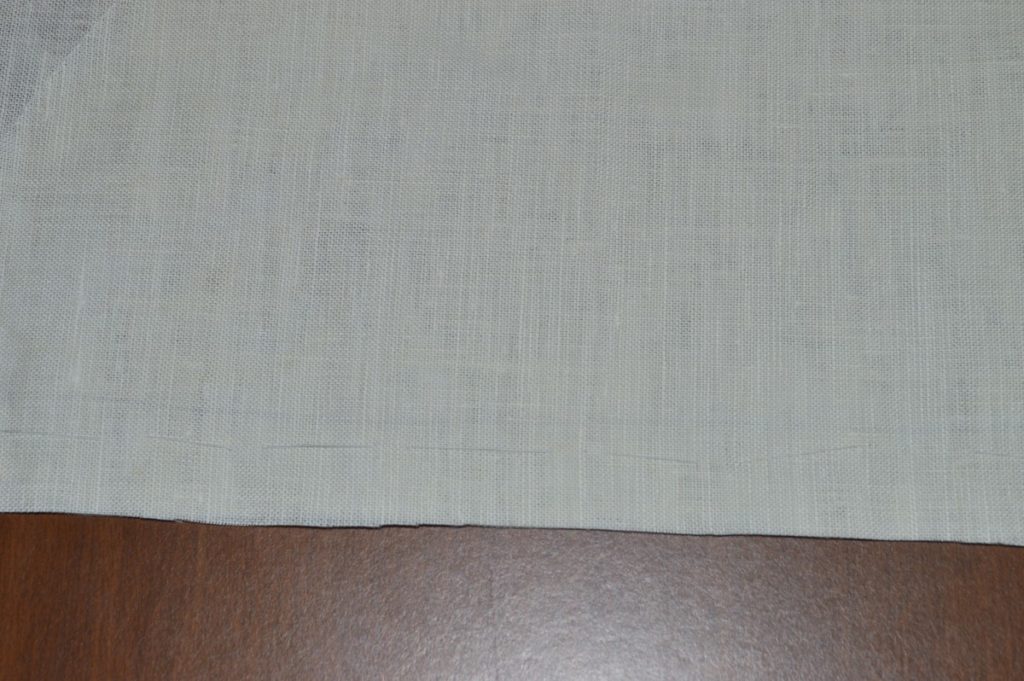
This step is optional, but recommended if you are unsure of sewing in a straight line without guidance. I used a pencil to lightly mark the seam line 1/2″ from the edge.
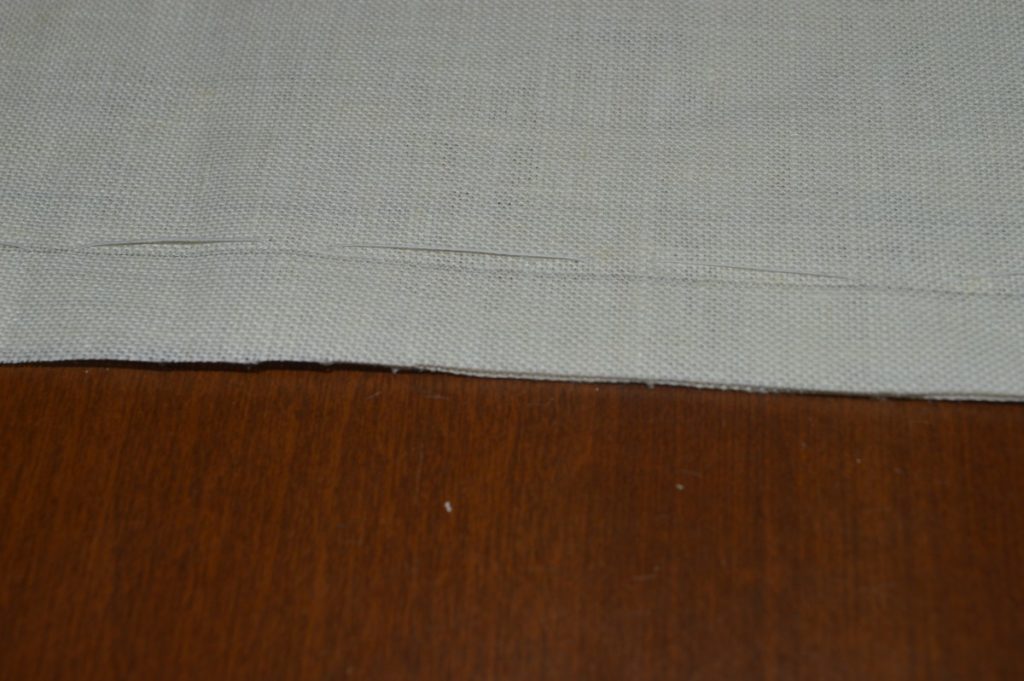
Notice how the seam line, the triangular piece, and the skirt all intersect at the same point.
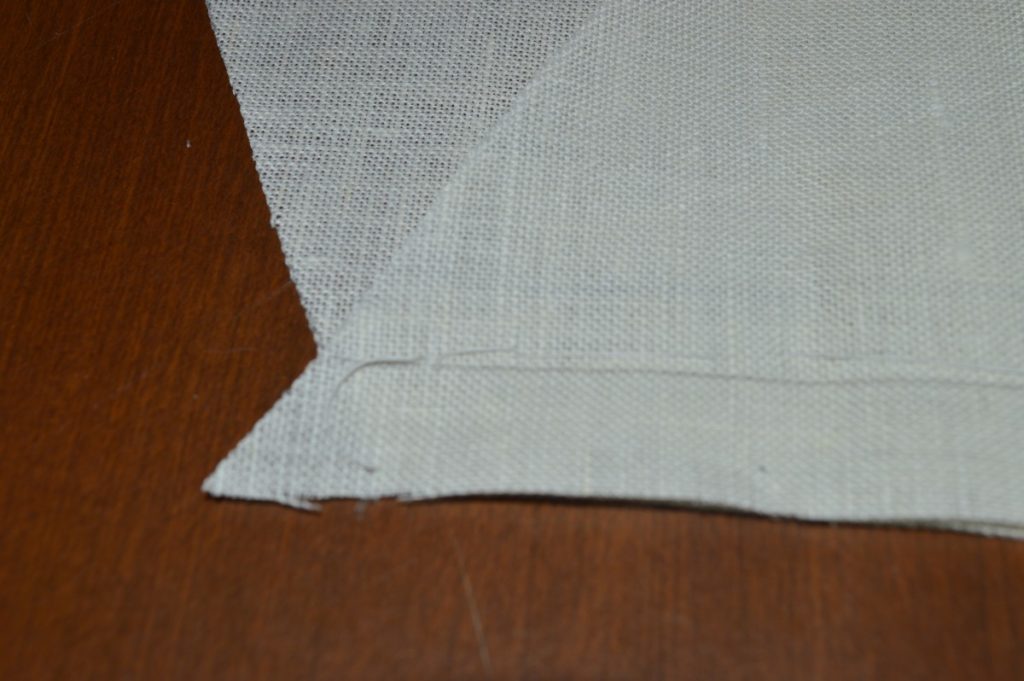
To sew these longer seams, often times a simple running stitch was used. I prefer to used something called the back and fore stitch, which is a combination of a back stitch and running stitch.
To perform this stitch, simply take a back stitch as normal, but instead of pulling the needle out, continue with the same movement and take an extra running stitch. I’ll be posting a video soon showing this stitch in more detail.
Sew the seam just along the inside of the pencil line, using the back and fore stitch. Sorry it’s so hard to see!

Turn to the underside of the stitch. You’ll notice it looks pretty much like a running stitch from this side. Trim this half of the seam only, to 1/4″.
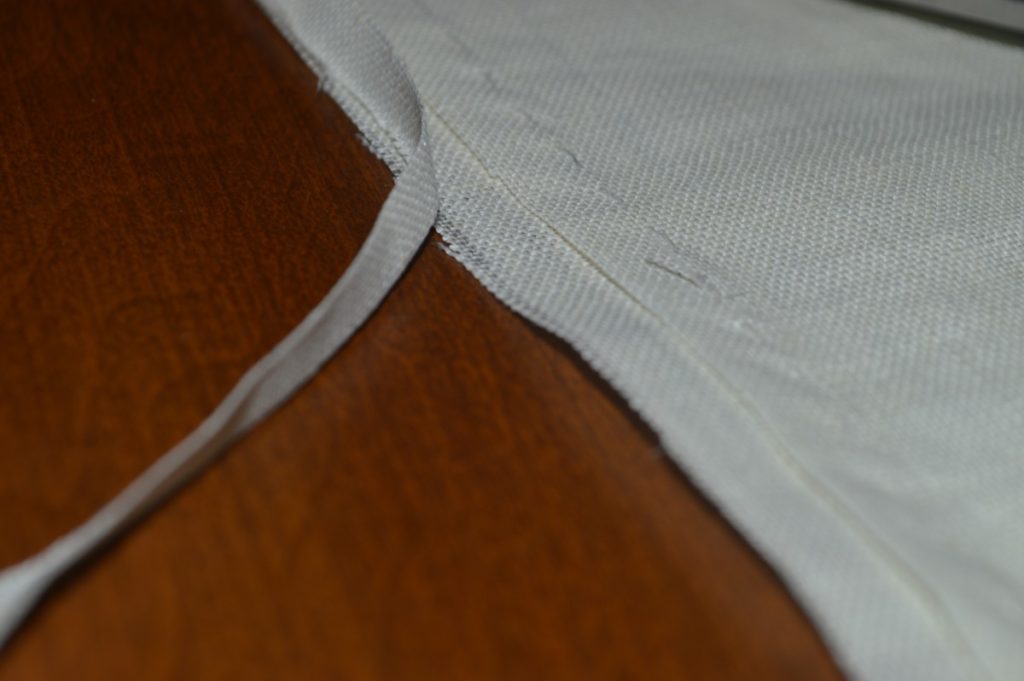
Open up the skirt on your ironing table, wrong side up, and press both sides of the seam in the same direction, with the 1/2″ seam on top.
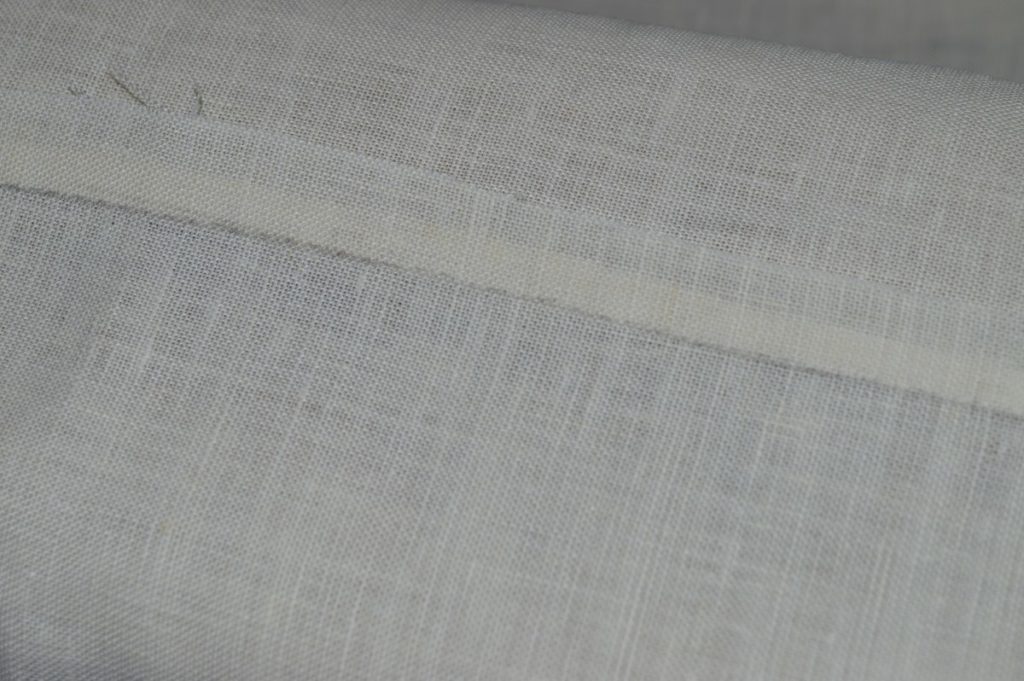
Fold under the larger seam under the smaller seam, pressing with your fingers as you go. If you want extra control, especially in curved seems, you could baste it closed at this point, but for a straight seam like this, I find it usually stays put. Press with the iron now.
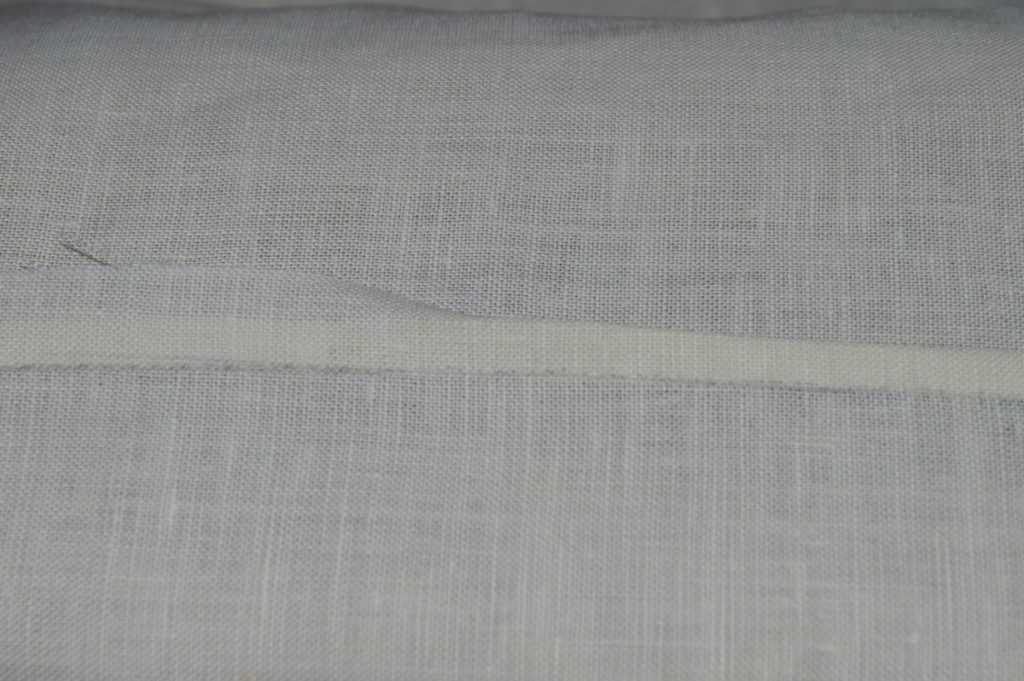
Press with the iron now.
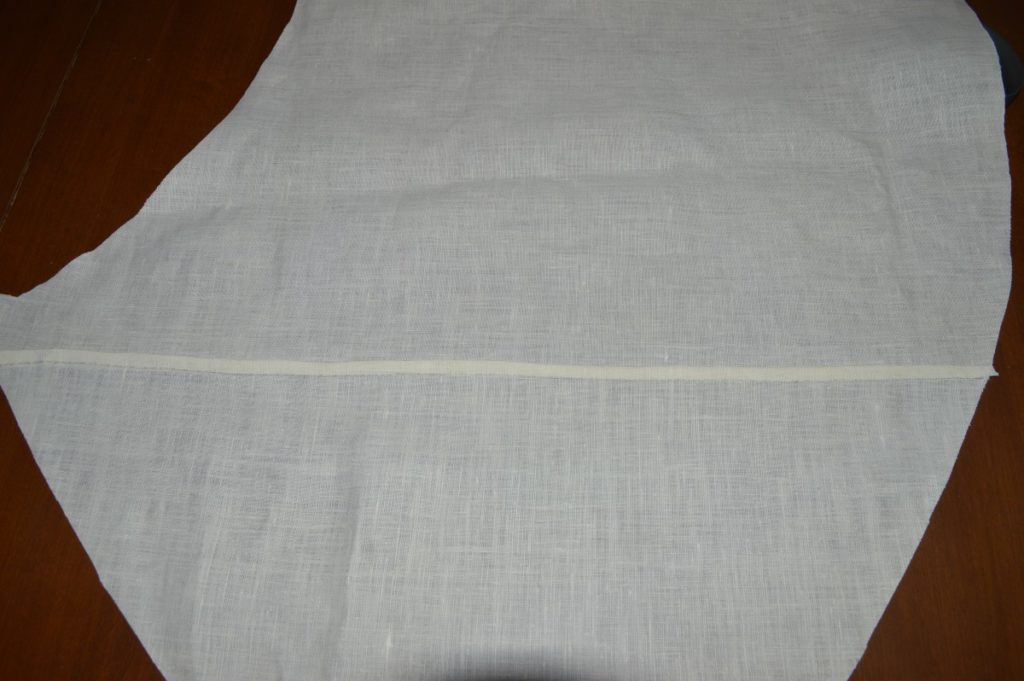
This is almost impossible to see, but fell down the folded edge, catching just a thread or two of the seam each time. Mine are about 8 stitches per inch.
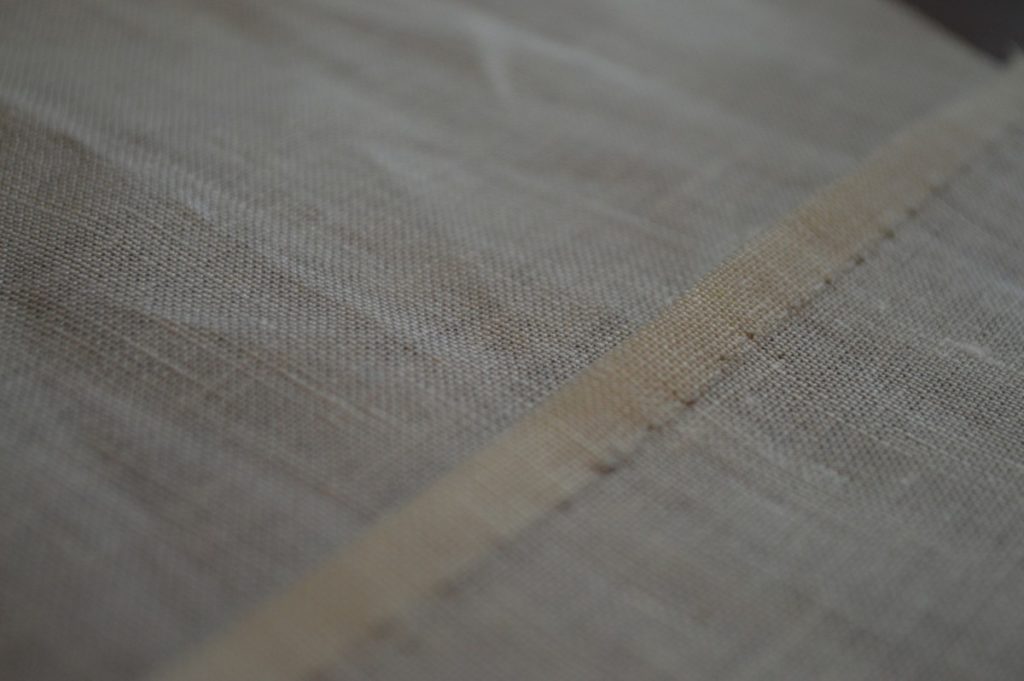
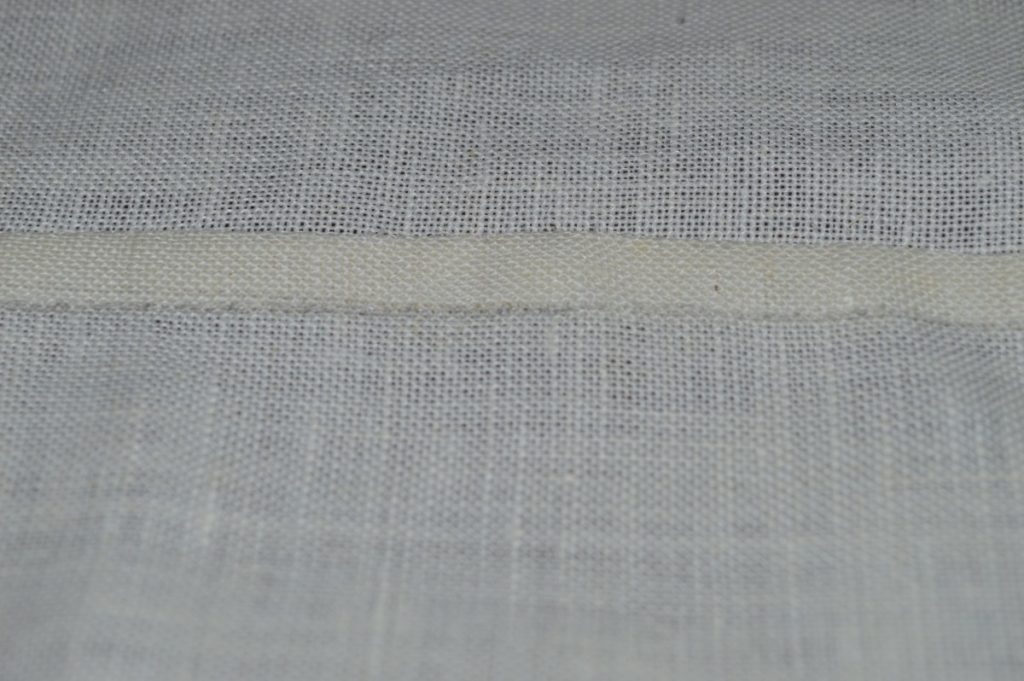
Here’s the seam from the other side. You can almost make out the opposite side of the felling stitches, as they’re longer and look almost like a running stitch.

Sew the two (or one) darts on the skirt in the same manner as you did the armscye dart. I put the right side of the backstitch on the edge closest to the front of the skirt, and pressed them towards the rear.
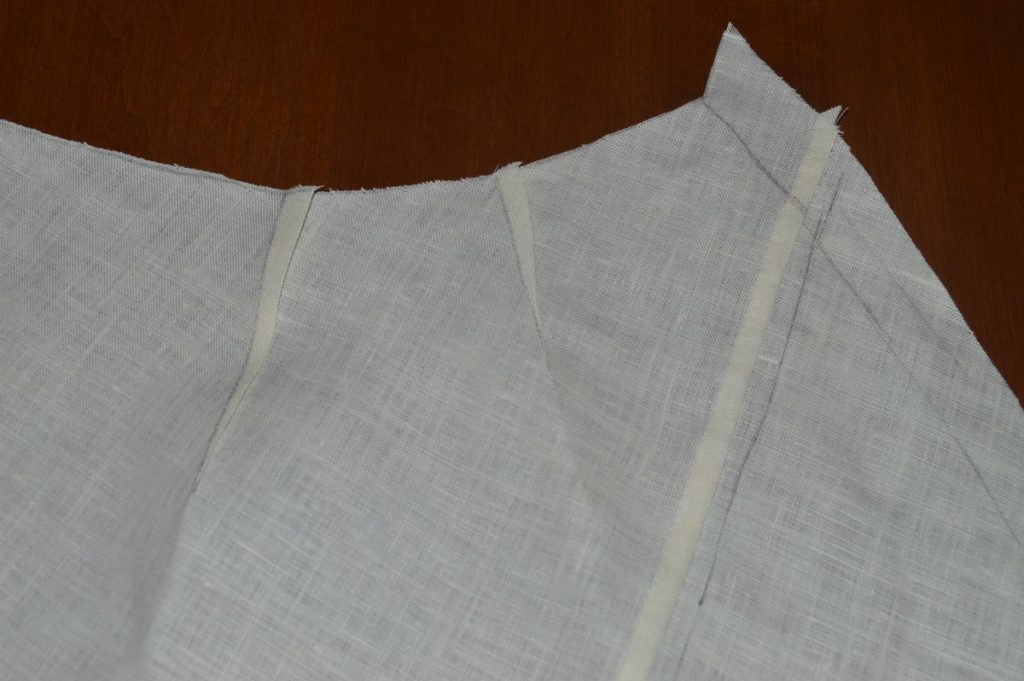
Here is the finished skirt from the right side, showing the two darts, and the skirt piecing we just completed.
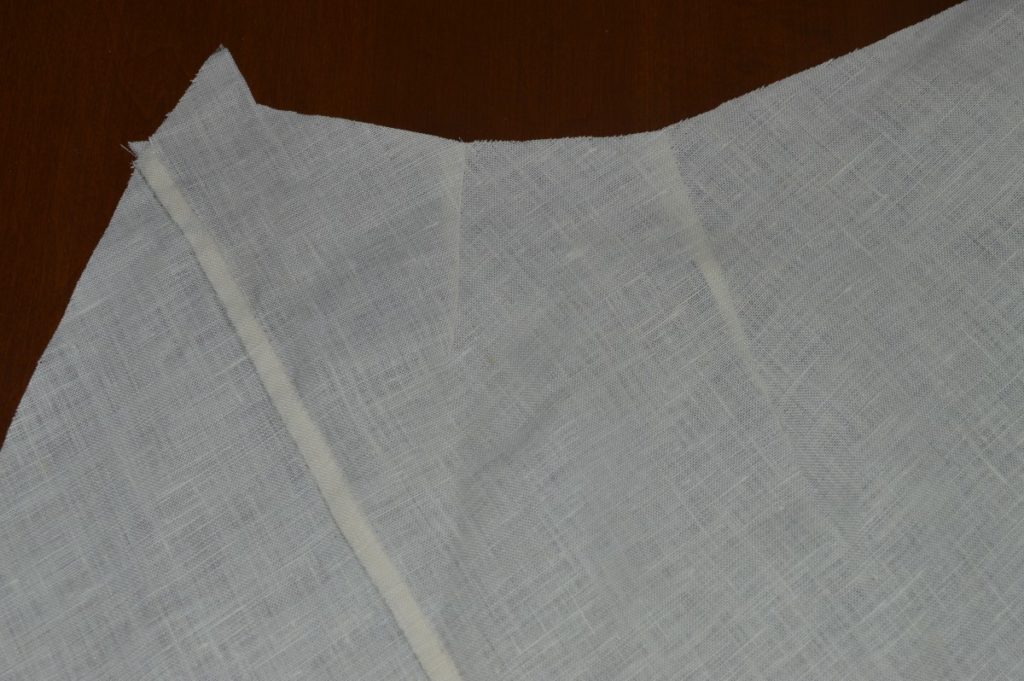
Closing the Darts
This being a linen or cotton coat, and therefore not taking to ironwork, we replace all of that ironwork with a number of darts! In general it’s easiest to sew the darts before doing any other work on the coat.
Armscye Dart
We’ll start with the armscye dart, which should be marked on the wrong side with chalk. You can then remove the tailor’s tacks so that they do not get caught up in the stitching.
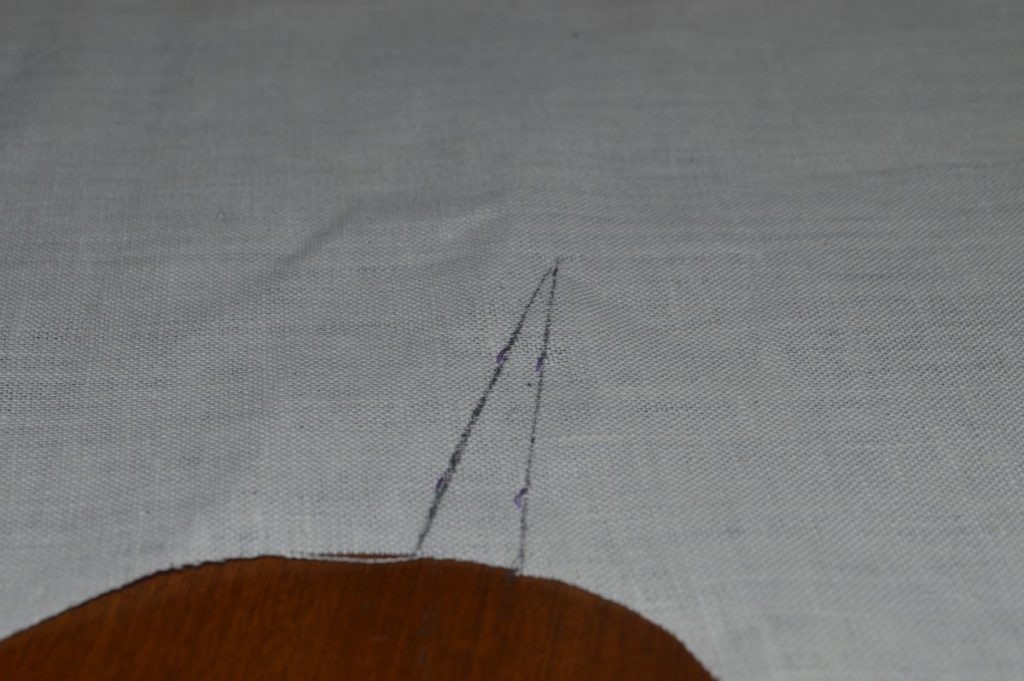
Fold the dart so that both sides are even with each other, and baste closed, about a quarter inch away. One trick I use to make sure the two sides are aligned is to poke my needle through both layers, checking where it comes out on the other side, then adjust as necessary. I’ll do this for every basting stitch sometimes.
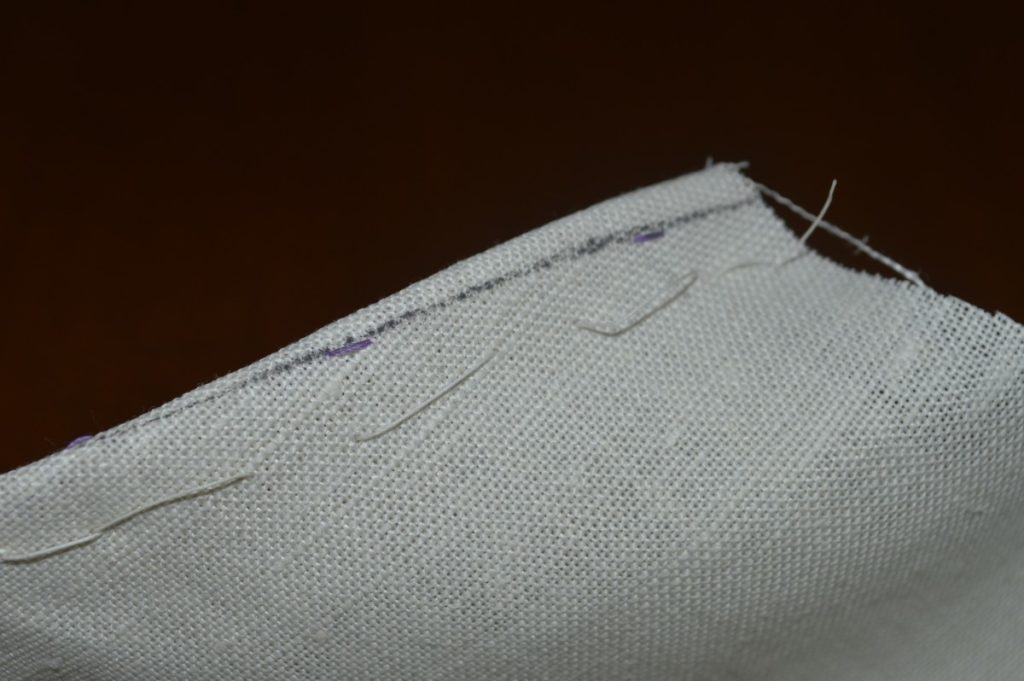
With the shoulder side of the coat facing towards you, sew the dart closed from the armscye towards the point, using a backstitch. The stitch size depends very much on the fabric you are using, I tend to use about 8 stitches per inch when sewing this weight of linen.
It’s important that you sew from the same side each time, as when the dart is pressed, you want the nice side of the back stitch showing. I start by sewing one or two stitches in place, and at the end, instead of making a knot, I simply turn the work around and make about three or four backstitches in the opposite direction.
At the narrowest point of the dart, the stitches should be right along the edge, just catching the fabric, in order to produce a nice crisp point.
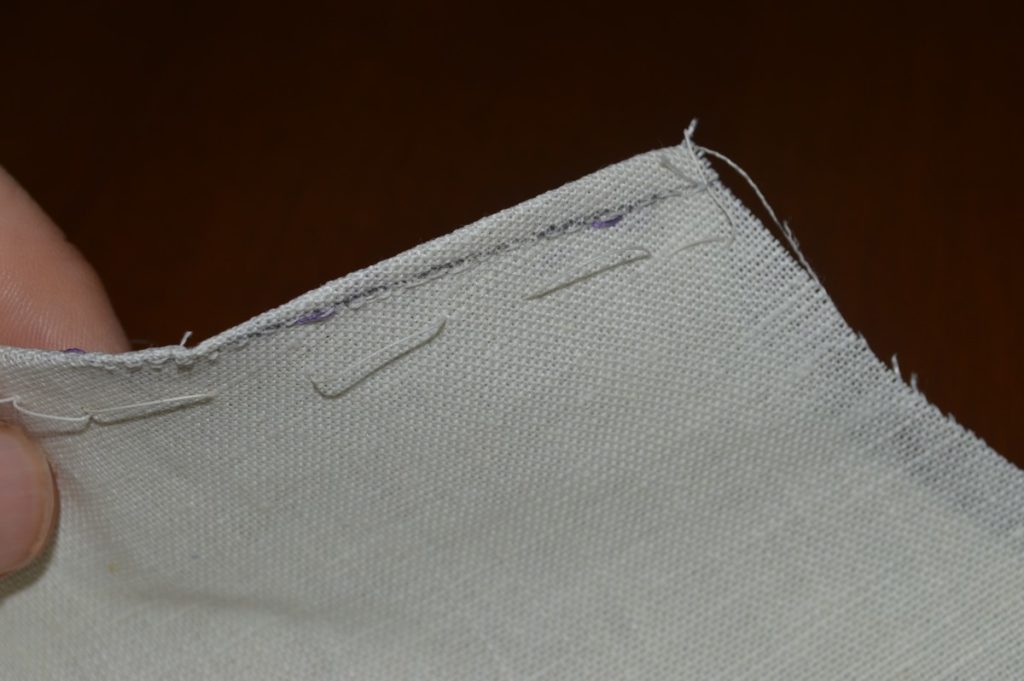
Place the forepart right side down on a pressing ham and center the narrow point of the dart over the fullest point of the ham. Press the dart towards the bottom of the armscye. This dart is so narrow that we are not going to cut it down the middle. Make sure to place a piece of scrap linen between the fabric and the iron to act as a press cloth and to help avoid scorching or leaving iron marks. You can use a little water but I generally find it unnecessary in linen.
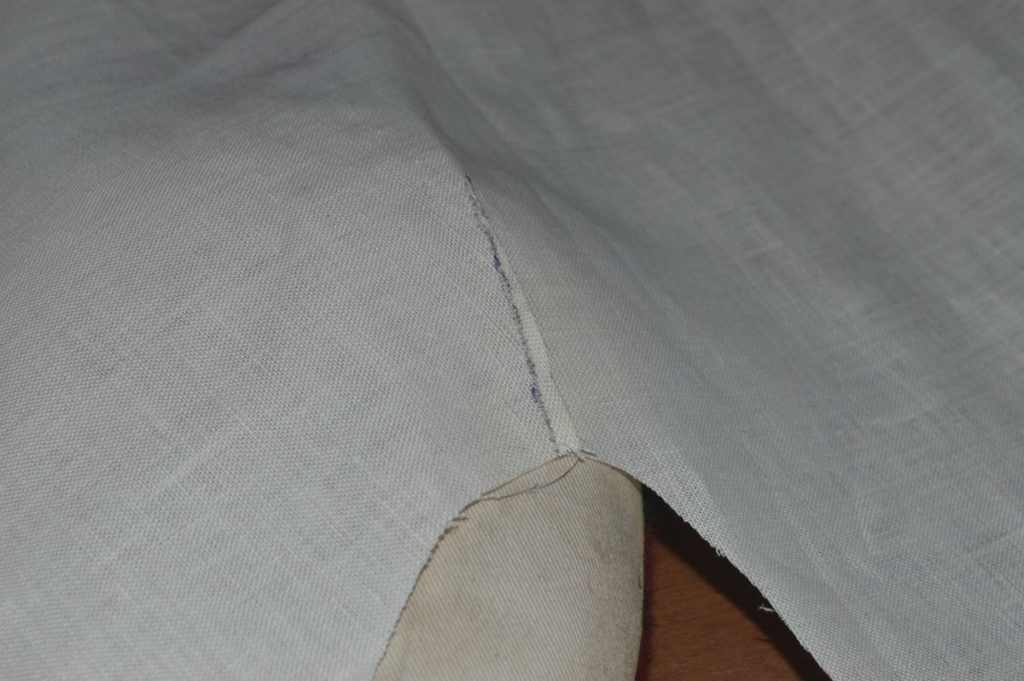
Press the dart again from the right side. Here is the finished armscye dart.
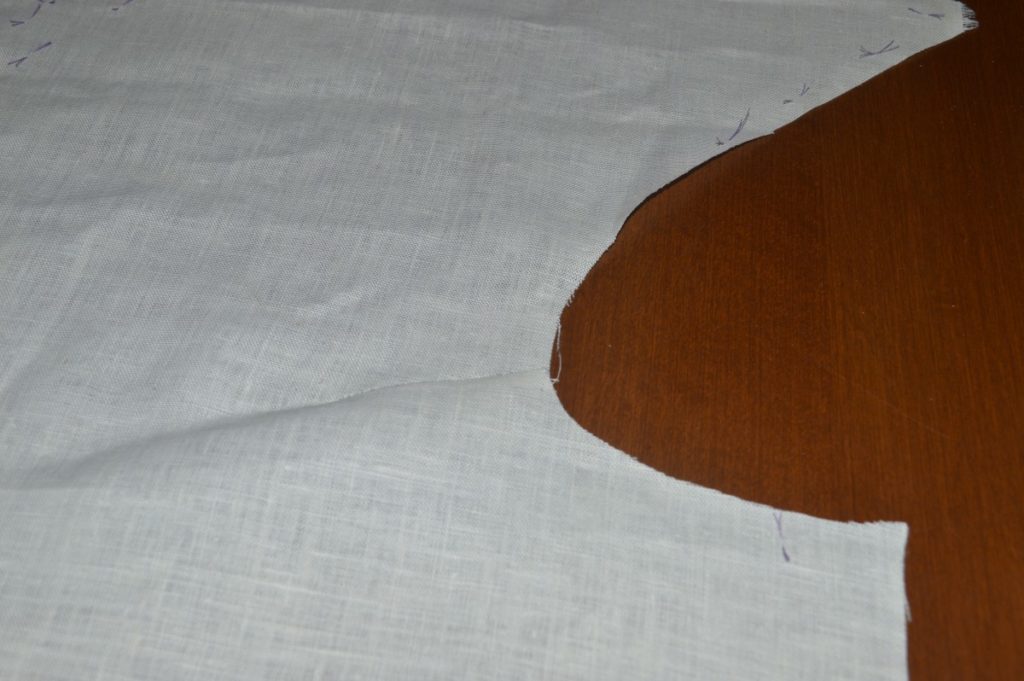
Lapel Dart
Here we have the forepart that was on the underside while laying out.
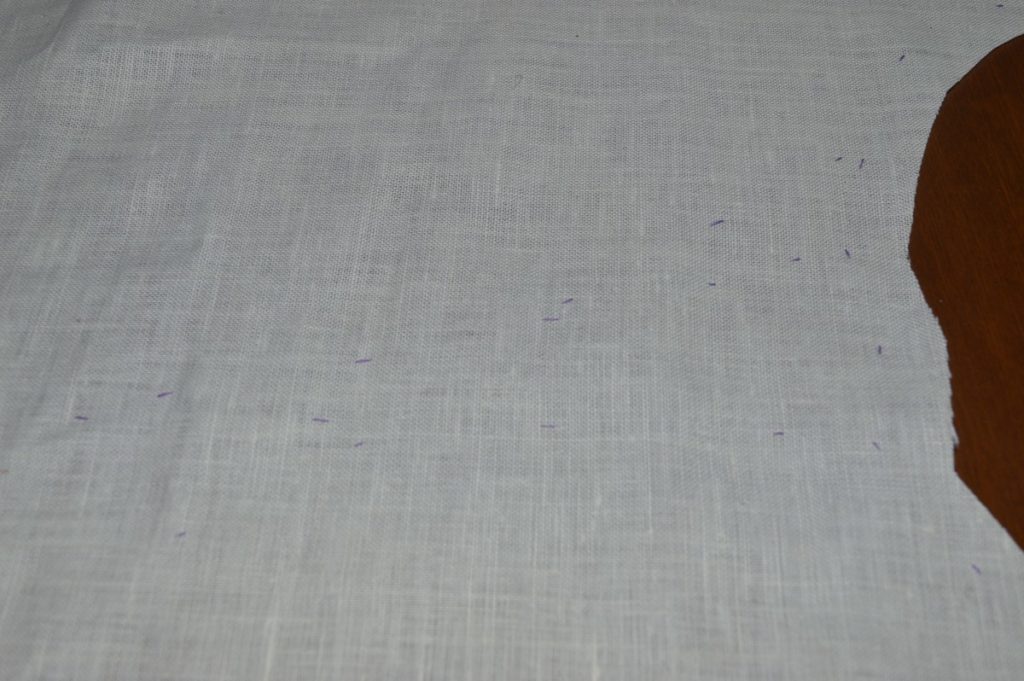
It’s almost impossible to see, let alone sew, so we’ll use chalk to define the lines more clearly. Due to the slippage of the linen, my line was off near the bottom of the dart, so I corrected that. Keep in mind one side of the dart is curved.
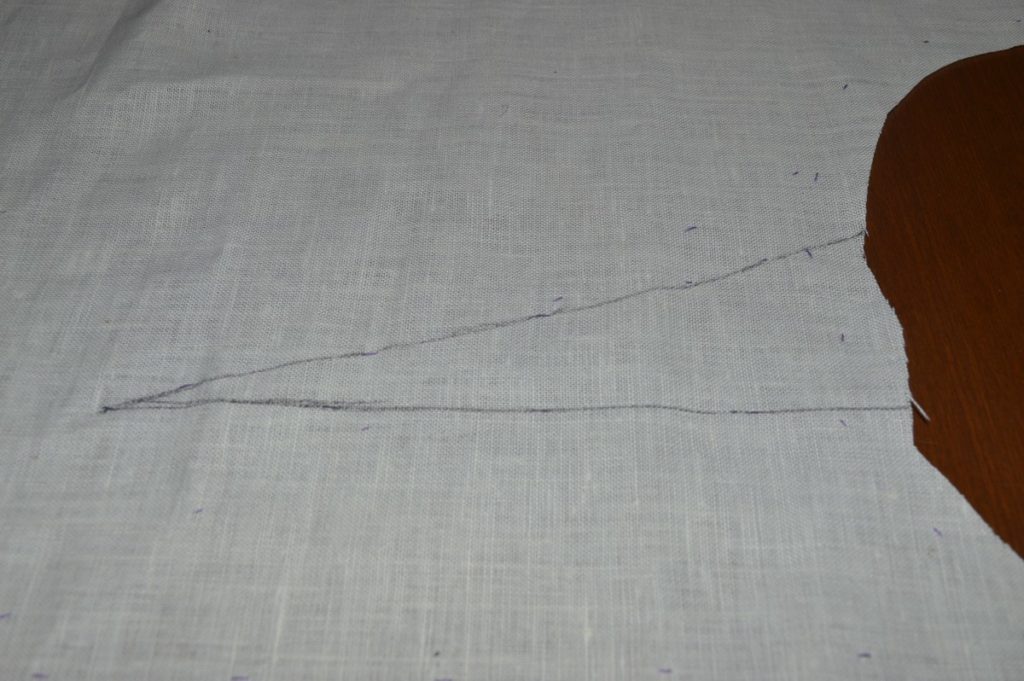
Fold the dart, aligning the edges as you go, and baste from the point to the edge of the dart. I find it easiest to do this with the curved side of the dart facing me, and remember to use the needle trick constantly to get the two sides lined up properly.

I like to turn this back over and sew the dart closed from the straight side. I feel it gives a little more accuracy, as you at least assured the dart will be sewn straight.
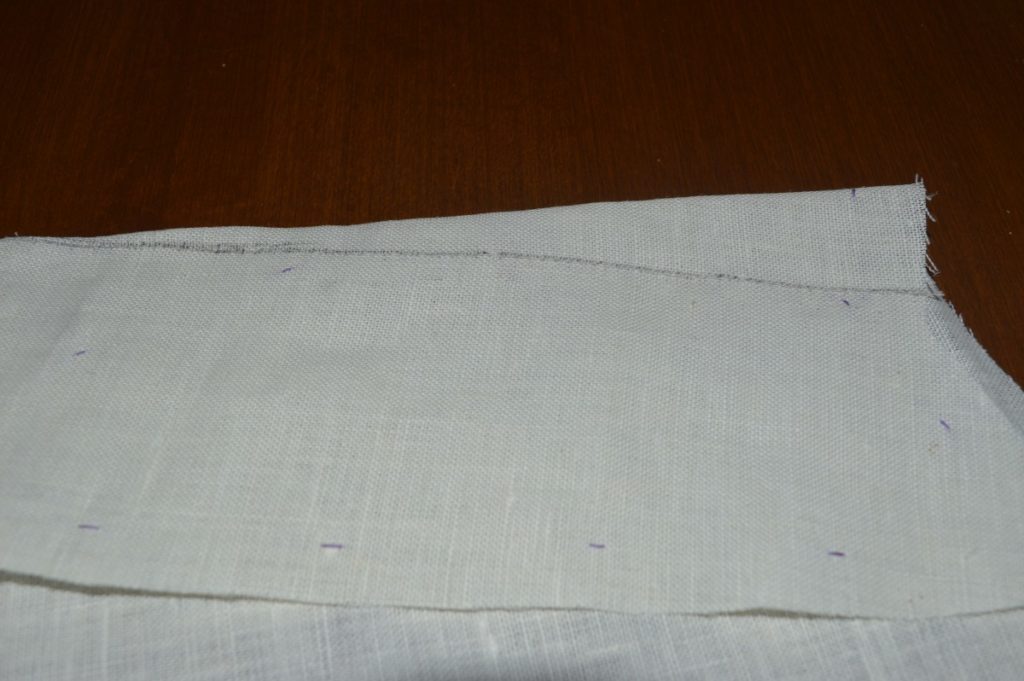
Yes, there are stitches there. So hard to see!
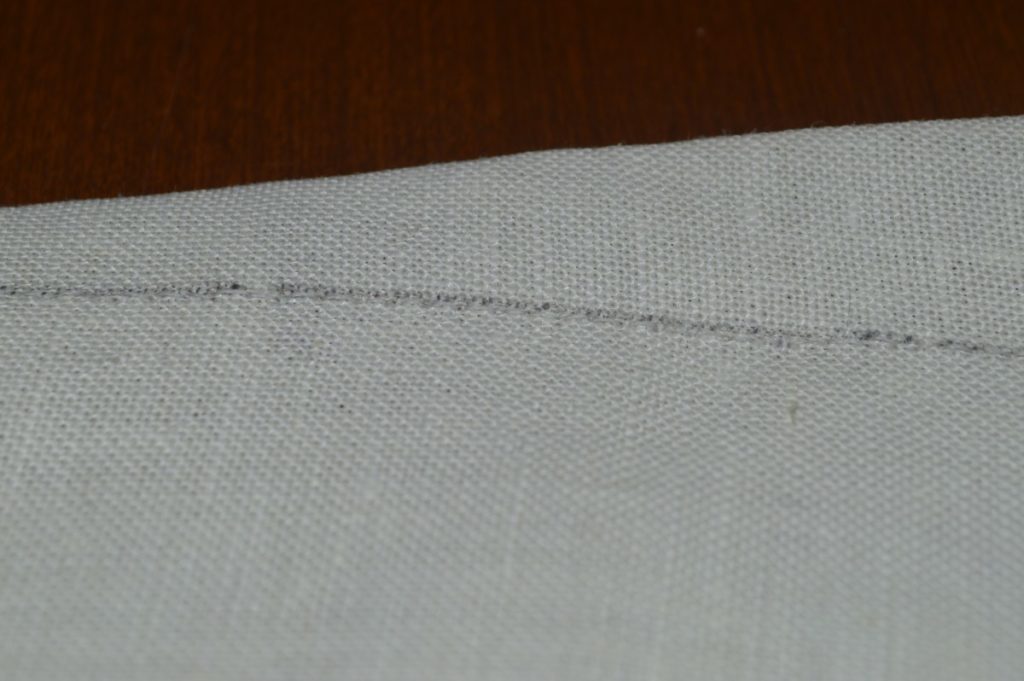
After sewing, turn over to the curved side of the dart and check your accuracy. No need to redo it if you’re a little off, just strive to train your mind and hands to do better next time.
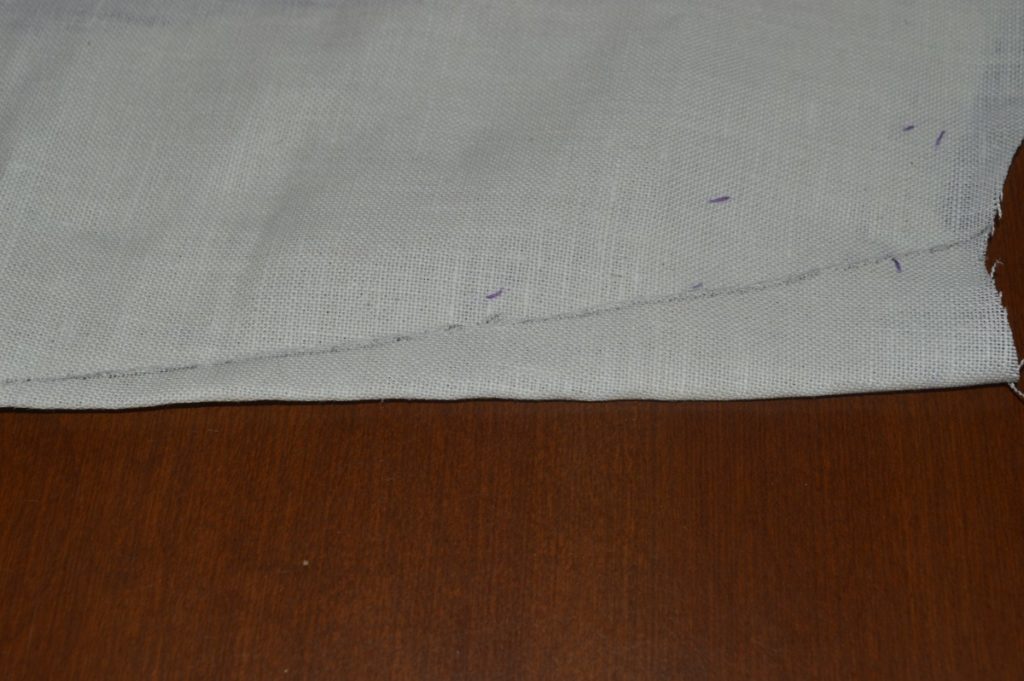
Since this dart will be enclosed by the forepart facing, I like to trim it to a quarter inch from the stitch line, in order to reduce bulk for the turn of the lapel.
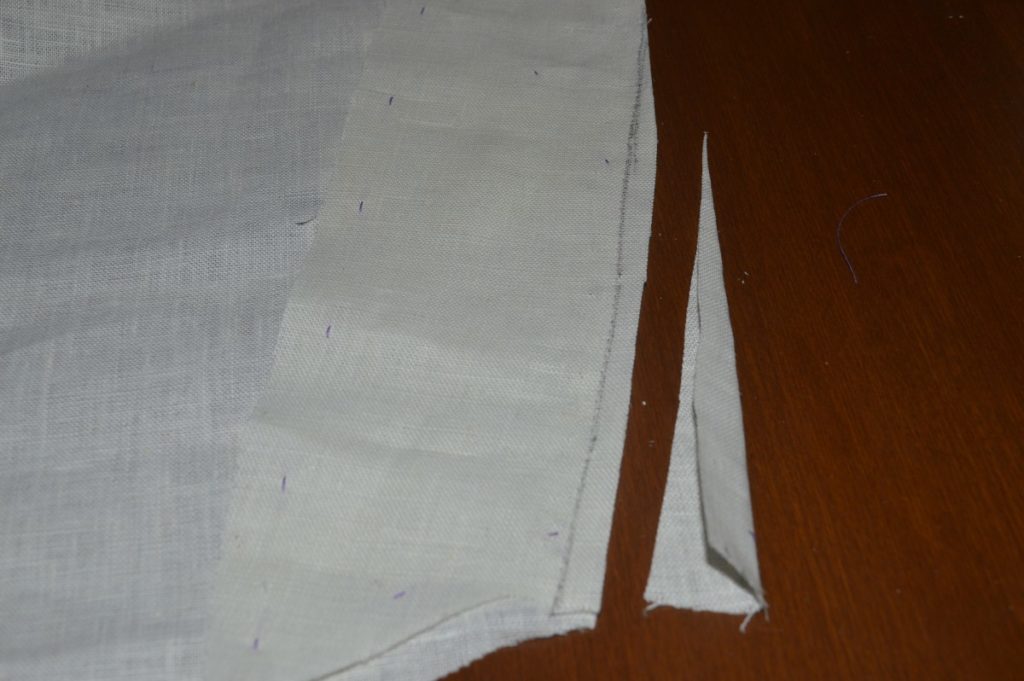
Press open the dart from the wrong side on the ham.
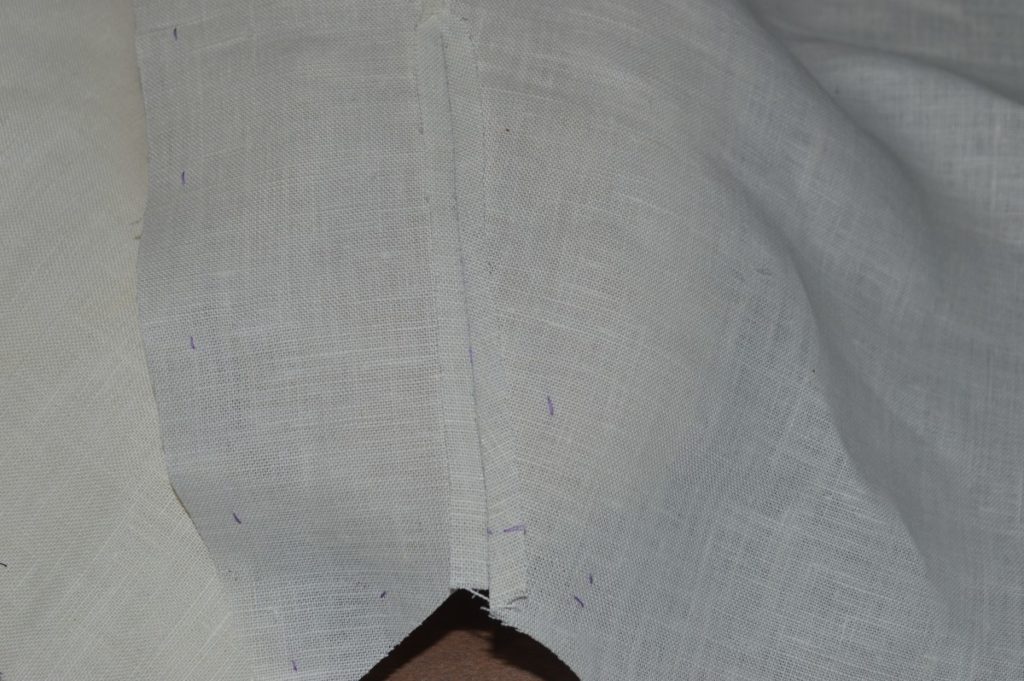
Try to smooth out the point as best you can, and press to one side. It can be very finicky.
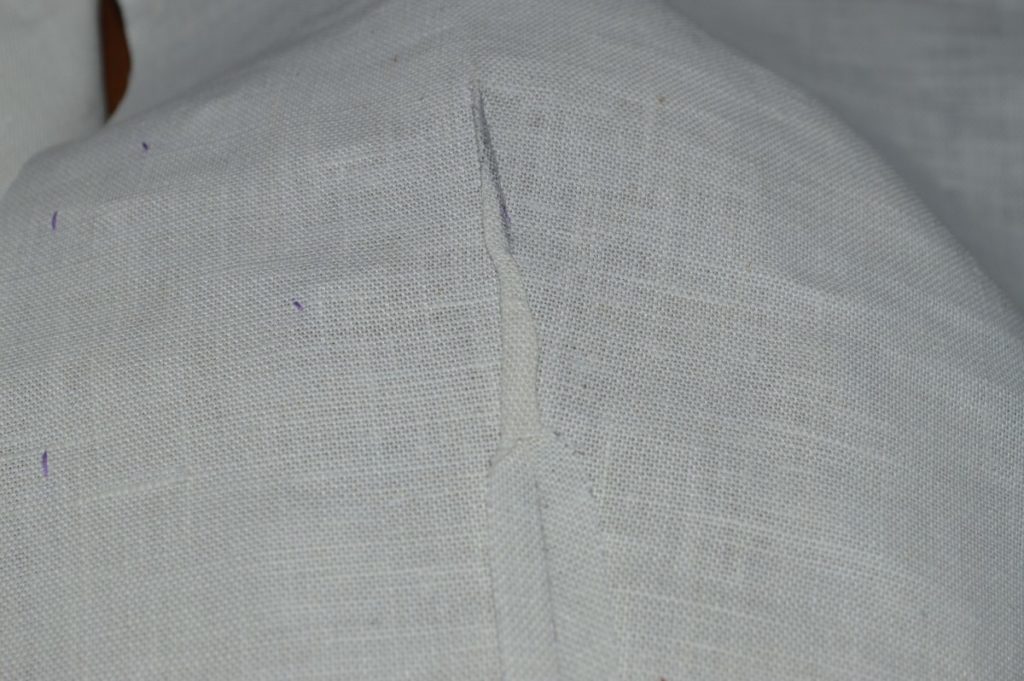
Press the dart from the right side.
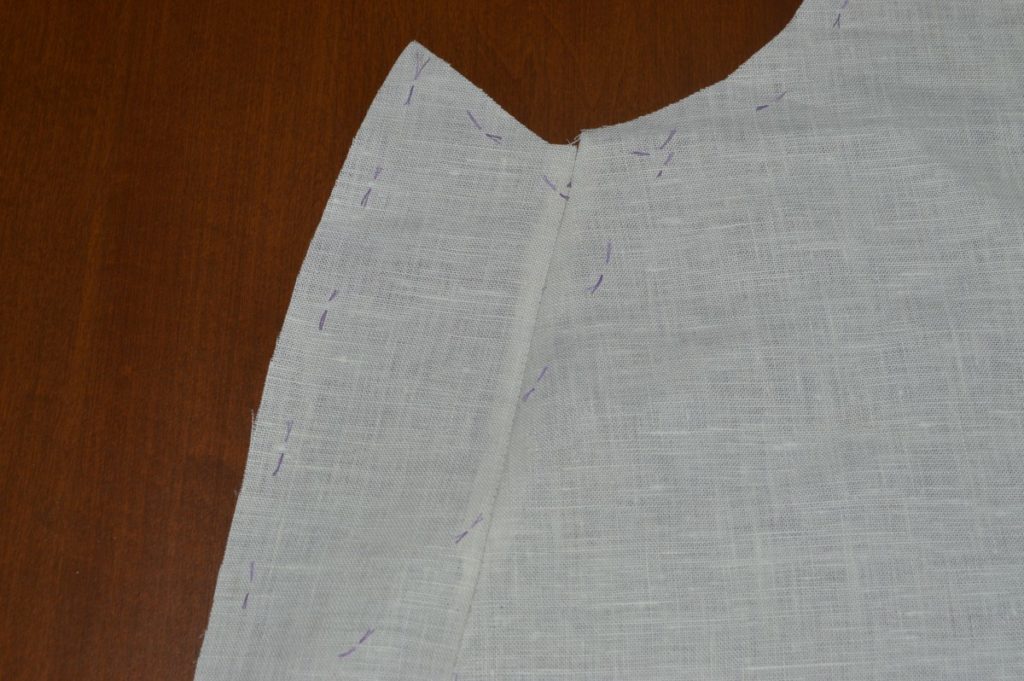
Here we have the darts completed on the forepart. Repeat for the other side in the same manner, if you have not done so already.
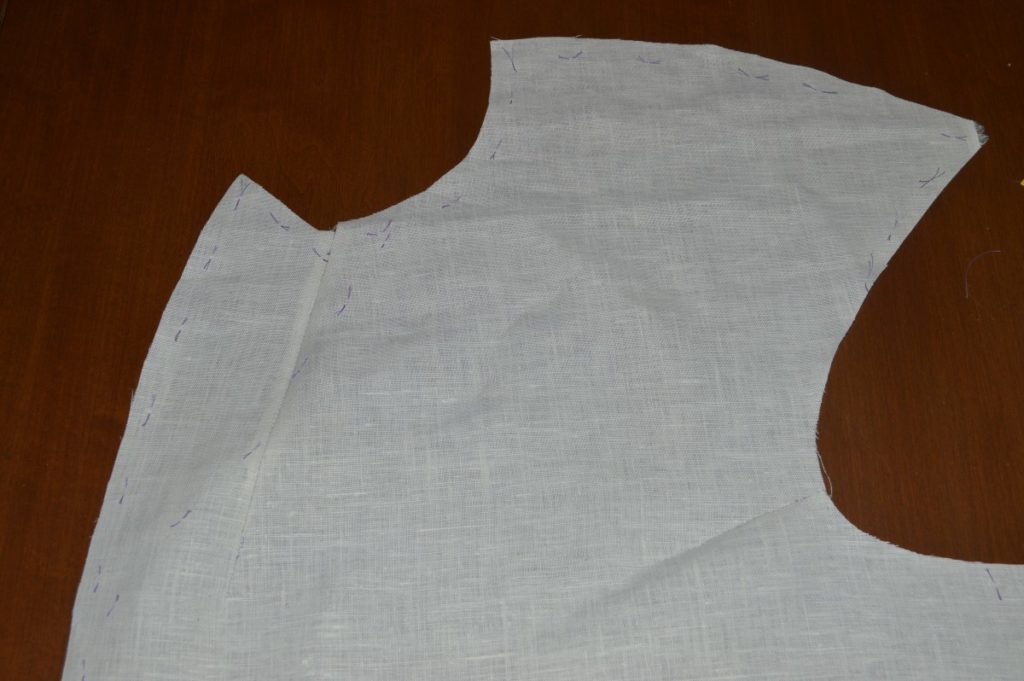
Tailor Tacks
Now that we’ve got all of the pieces cut out, before separating the two halves, we must use threads to mark the chalked inlays and darts more durably, and transfer those marks to the piece underneath. This is done with a stitch called the tailor’s tack.
First, cut a lengthy piece of contrasting thread – I used a lovely polyester in purple, as we’ll be removing the threads as we go, and the polyester will slide through the fabric more easily. To be period correct, you could use a waxed cotton thread. The thread should be doubled in the needle, and about 3 feet in length after doubling.
Using a very short stitch, with at least an inch between on the straight runs, stitch along each of the inlays, darts, and roll line on your pieces. Leave the thread fairly loose in between stitches, and on curved areas, make the stitches closer together, with even more slack.
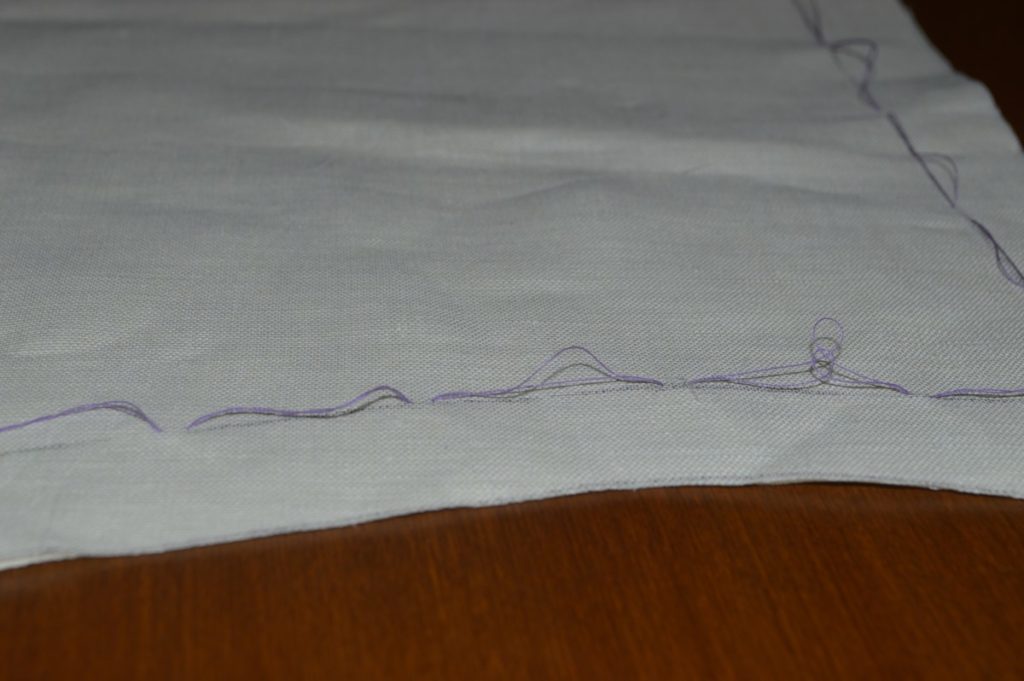
Here are the inlays, darts, and roll line marked out in thread. It gets a little busy in this area!
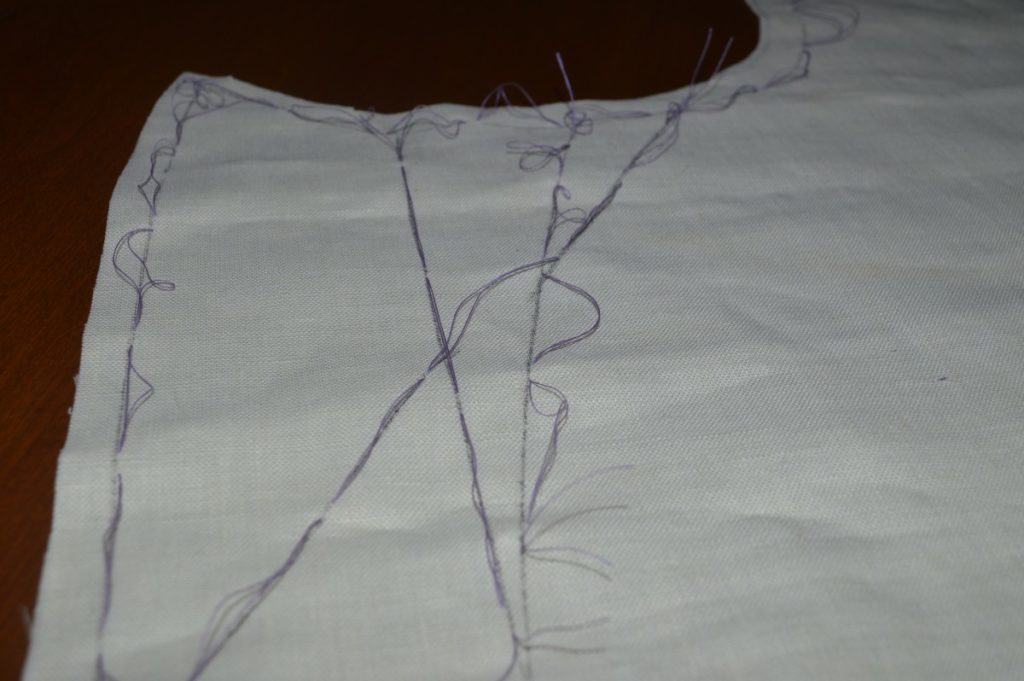
On the top side, use scissors to snip between each stitch.
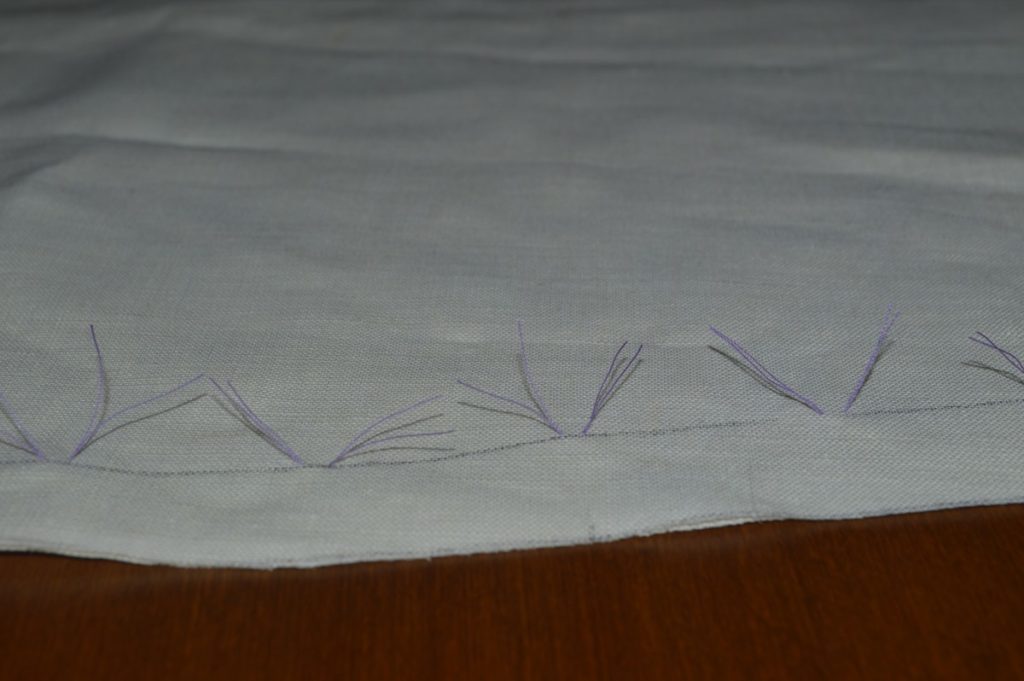
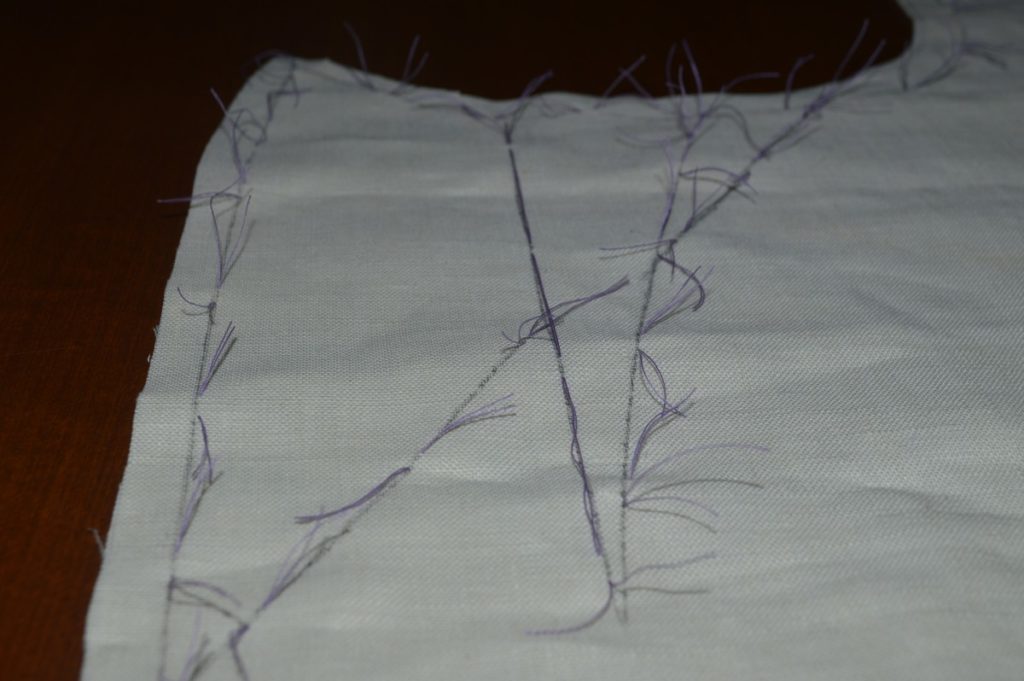
Now, use your fingers to gently separate the two halves of the fabric. Don’t pull too hard or far – you still want the thread to remain in both halves.
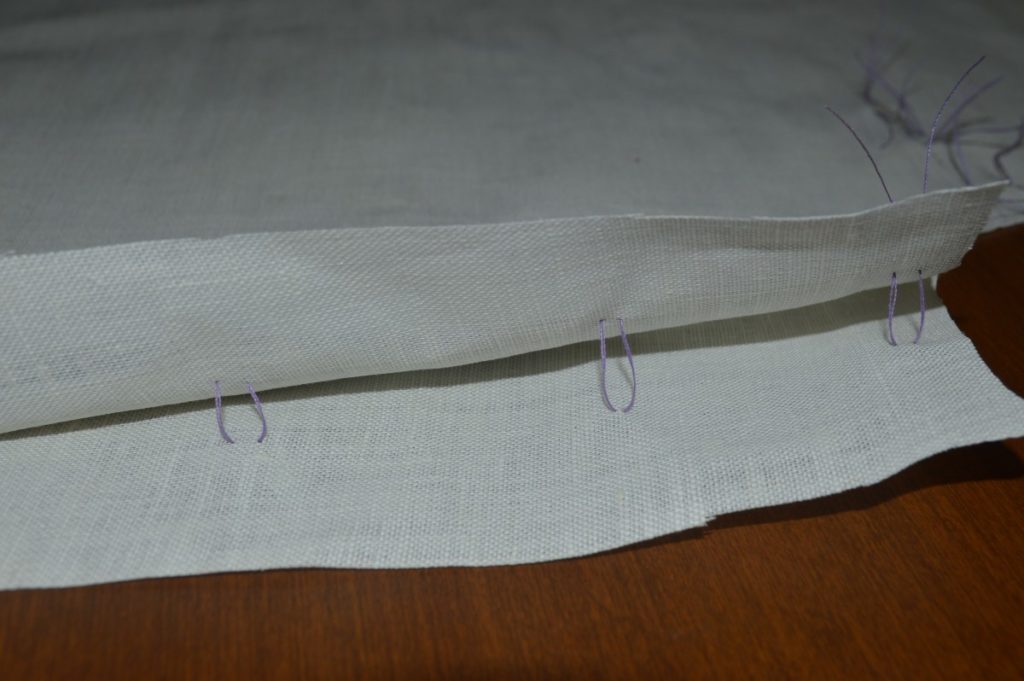
Carefully snip the thread in between the two layers. This gives you a mark on each piece that will not wear out as you work.
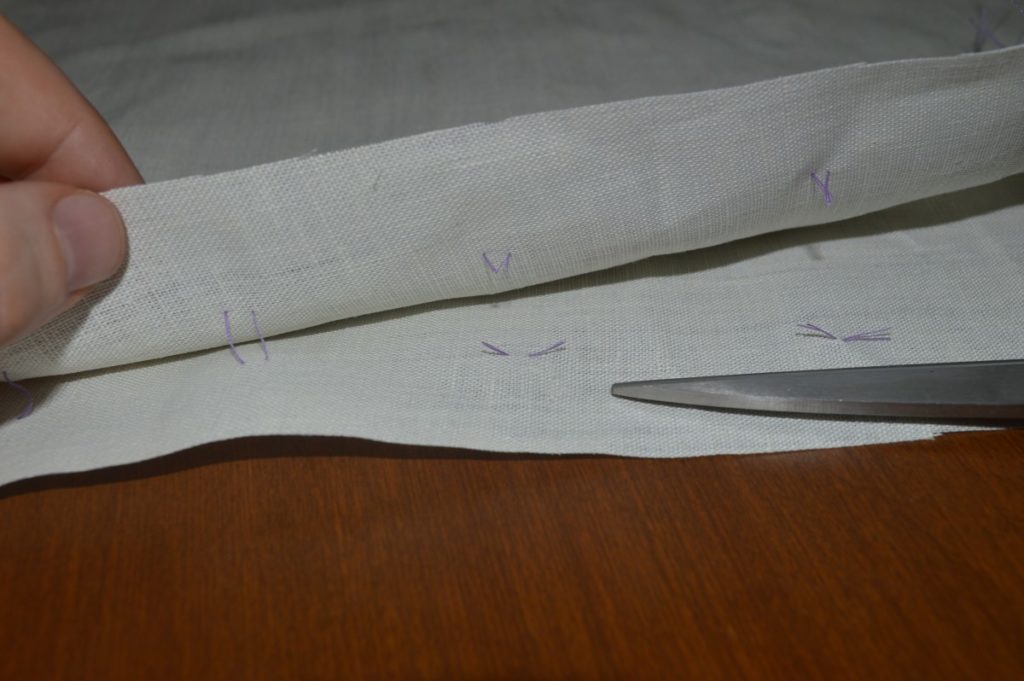
Here is the result, showing the marking lines transferred to the bottom piece of the forepart.
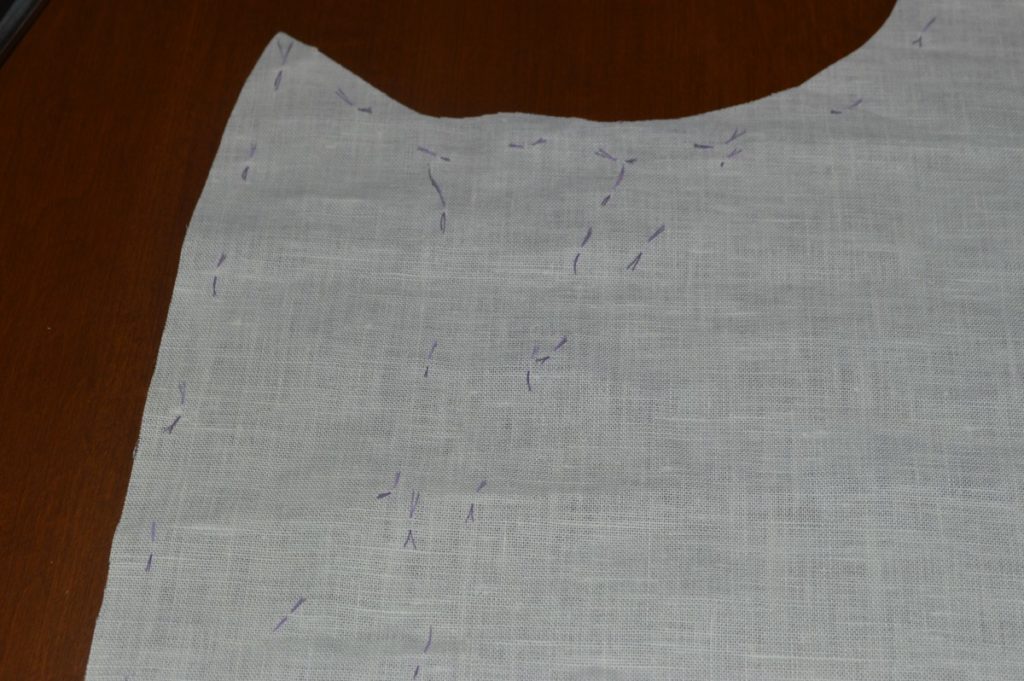
Inlays and Cutting
Before laying out your pattern pieces and cutting, it’s important to protect your fabric from possible shrinkage and to iron it out smoothly. The easiest and best way is to gently hand wash your fabric, and allow it to line dry until slightly damp. Then take your iron and press the fabric. On linen, this can be a somewhat frustrating process due to the way linen tends to wrinkle at the slightest movement. Just do the best you can, and remember, it’s not really wrinkled, but rather the very fashionable ‘rumpled’ look that is all the rage.
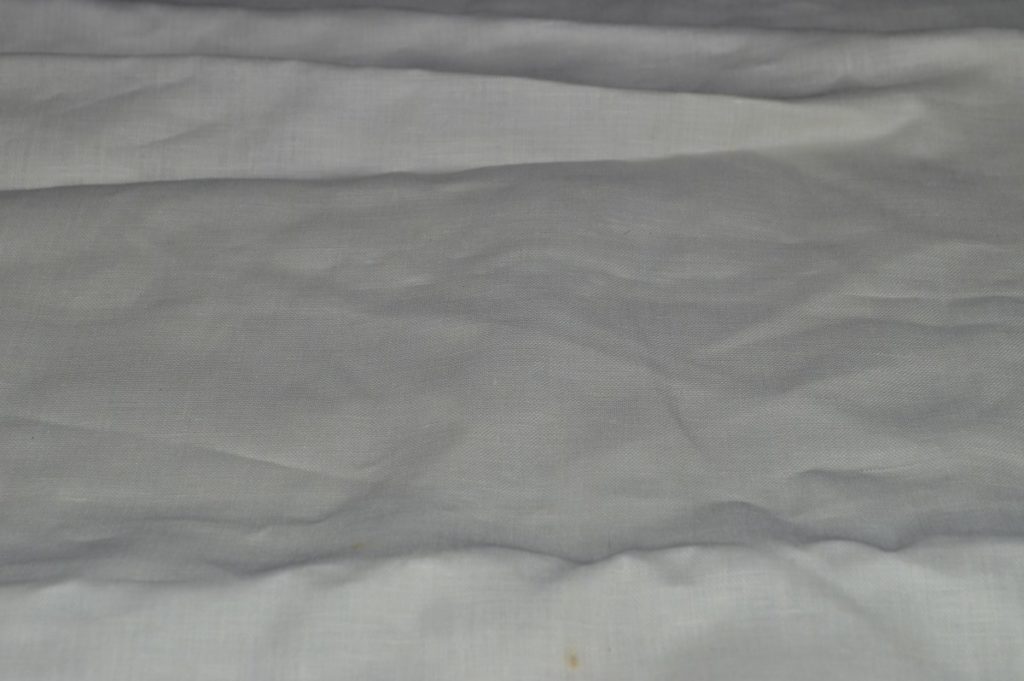
Inlays
Inlays are often added as a way to ensure you have enough fabric to work with in the fitting process. The diagram below shows all of the most common inlays used – the problem is they can get a little confusing for the beginner. If you’ve gone through the full fitting process as described in my tutorials, you should be okay without them. There are two I’d recommend definitely using though – one being on the side seam of the forepart, and the other being the small inlays above the plaits on the back, which will allow you to adjust the height of the back buttons if necessary.
Here are the inlays I used on the forepart. The pattern is first traced out on the doubled layers of fabric, and then the inlays added to that. It’s a good idea to measure out the width of the inlays if you are a beginner, but it’s not strictly necessary to be exact.
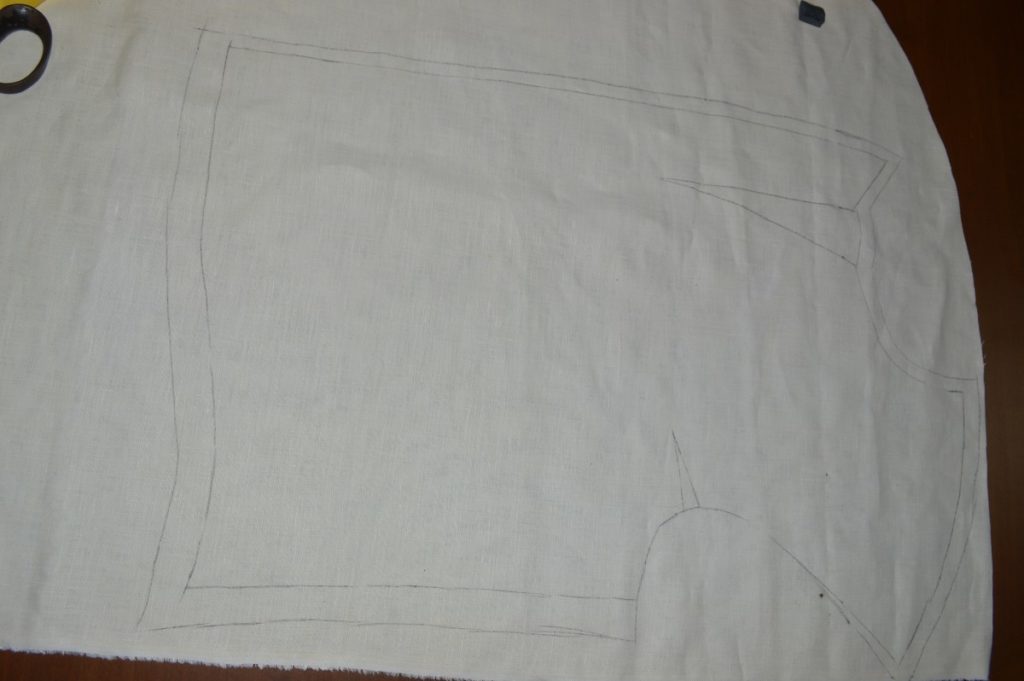
Cutting the Skirt
Cutting the skirt can be a bit of a pain. The pattern piece is so wide that it often doesn’t fit on the cloth unless you unfold the fabric and trace it twice. However, tailors of the period had a solution: cut the pattern into two pieces so you could be economical with the cloth.
To begin, lay out the skirt pattern with the front edge running parallel to the selvage edge of the fabric. Make sure the pattern is away from the selvage. Notice how the pattern runs off the folded edge of the fabric. On your particular pattern, the amount that runs of the edge may be bigger, or a lot smaller – I’ve had some that were just an inch or so off the edge of the cloth.
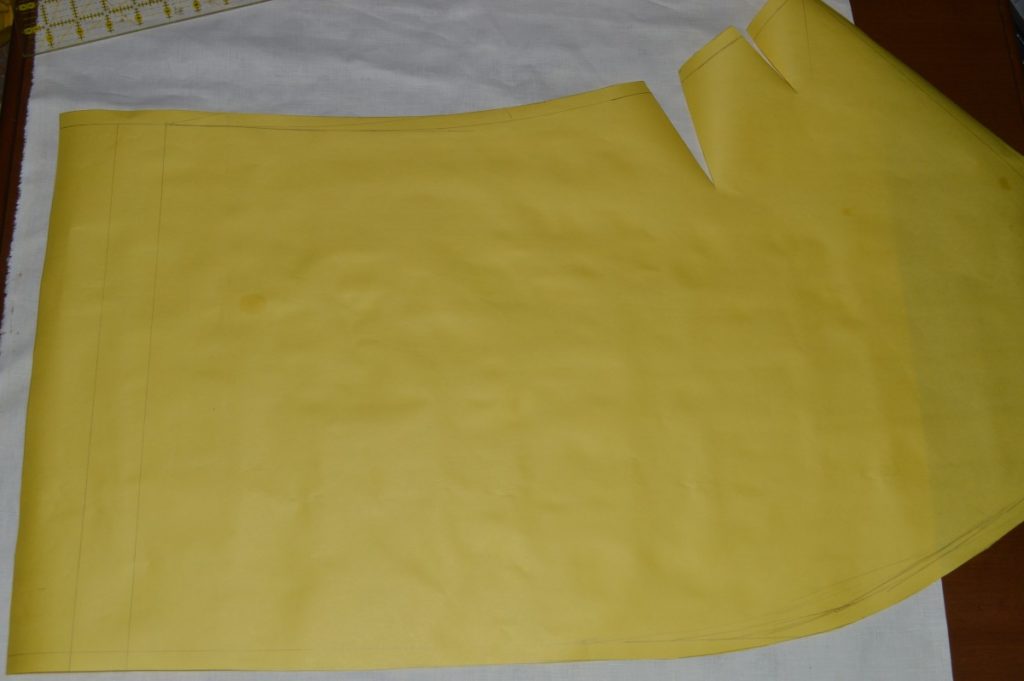
Lay a ruler along the edge of the cloth and draw a line on the pattern right over the folded edge.
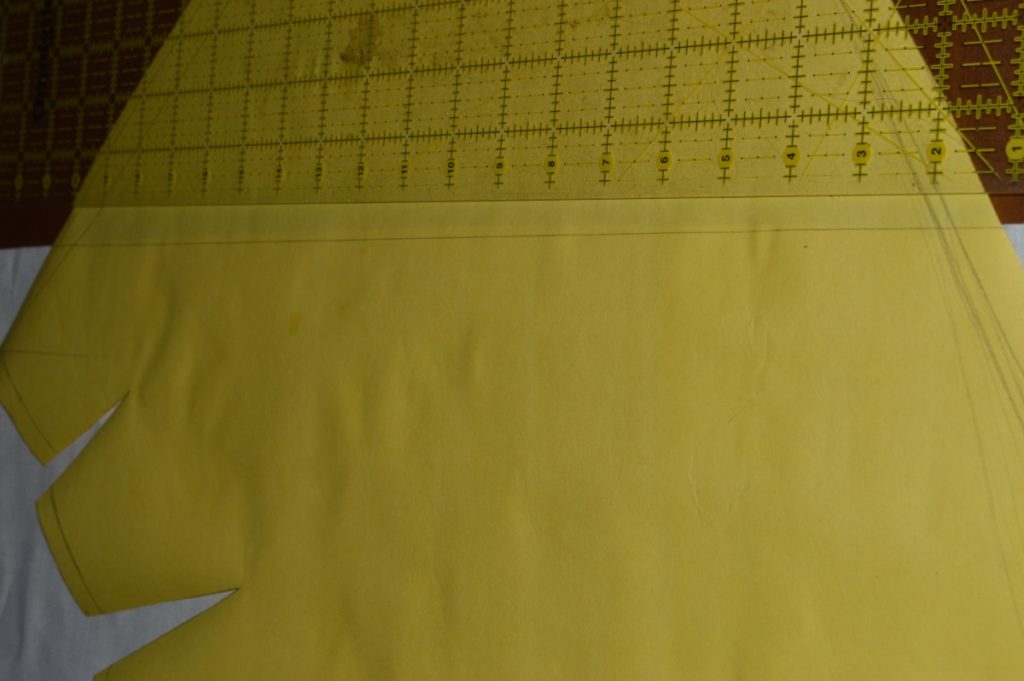
Draw a line parallel and to the inside of the original line, at a distance twice the seam allowance. Since we are using 1/2 inch seam allowances for fitting purposes, draw this line 1 inch from the first. This will be the line that you cut on to split the skirt pattern.
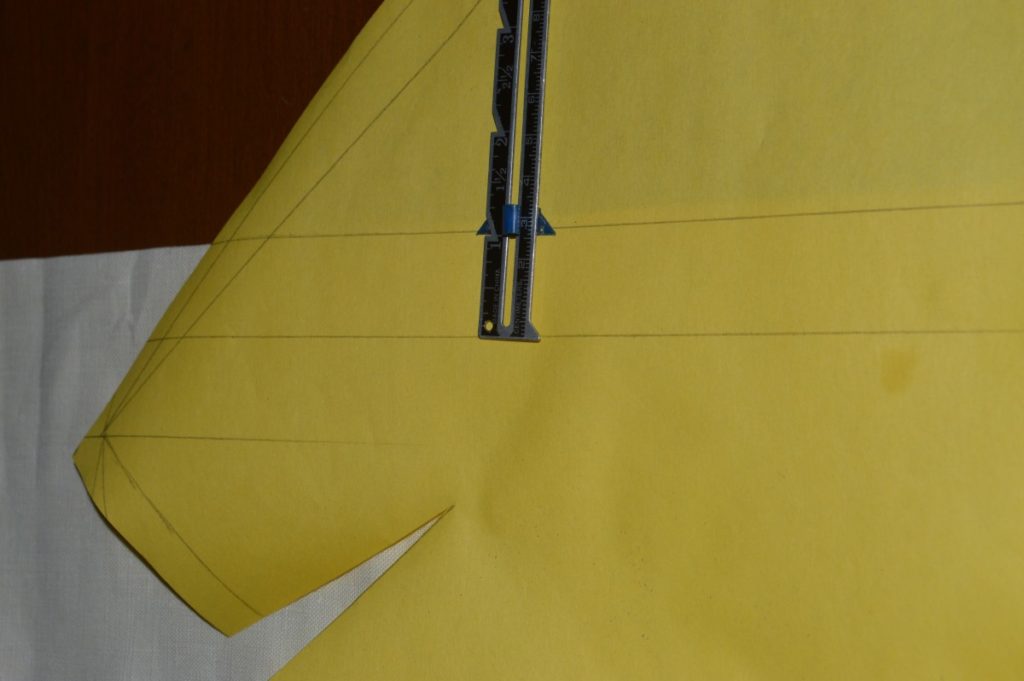
Trace the main part of the skirt onto the fabric at this point, before you move the pattern. Remember not to cut out the darts out in the fabric.

The skirt pattern can now be cut along the second, inner line. Use the triangular pattern piece to cut out the rest of the skirt in a strategic location, using up some awkward blank space on the fabric. The cut edge runs parallel to the selvage.
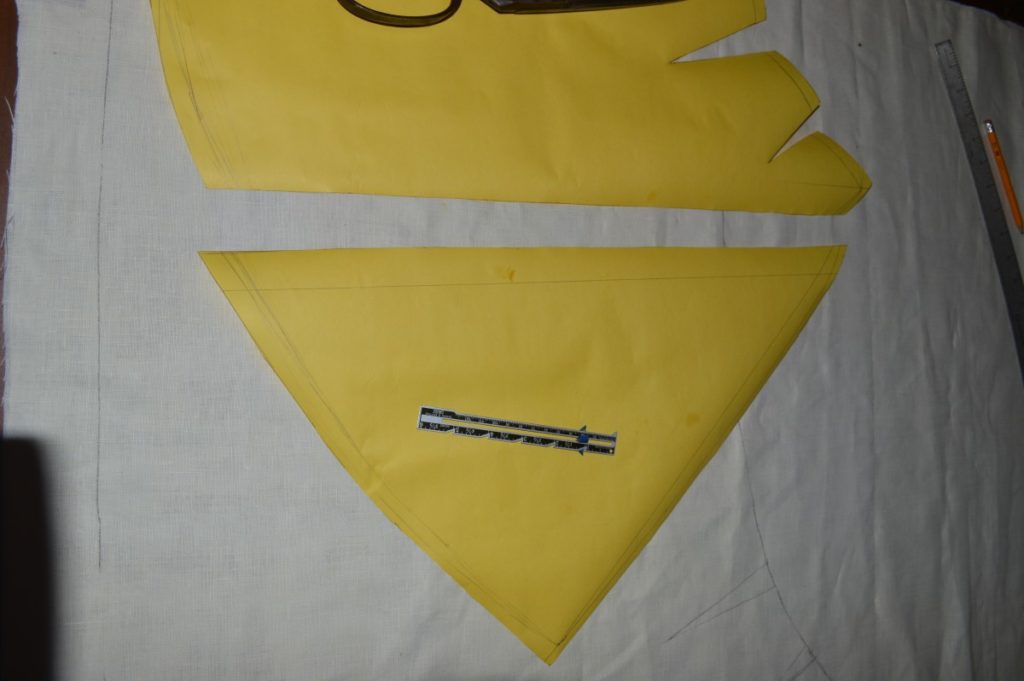
Here are some photos of my pattern pieces laid out on the cloth, with inlays on the forepart. In the chaos between laying out and trying to photograph at the same time, I neglected to lay out the other inlays, especially the two above the ‘steps’ on the back piece!
The forepart showing the lapel dart and roll line.
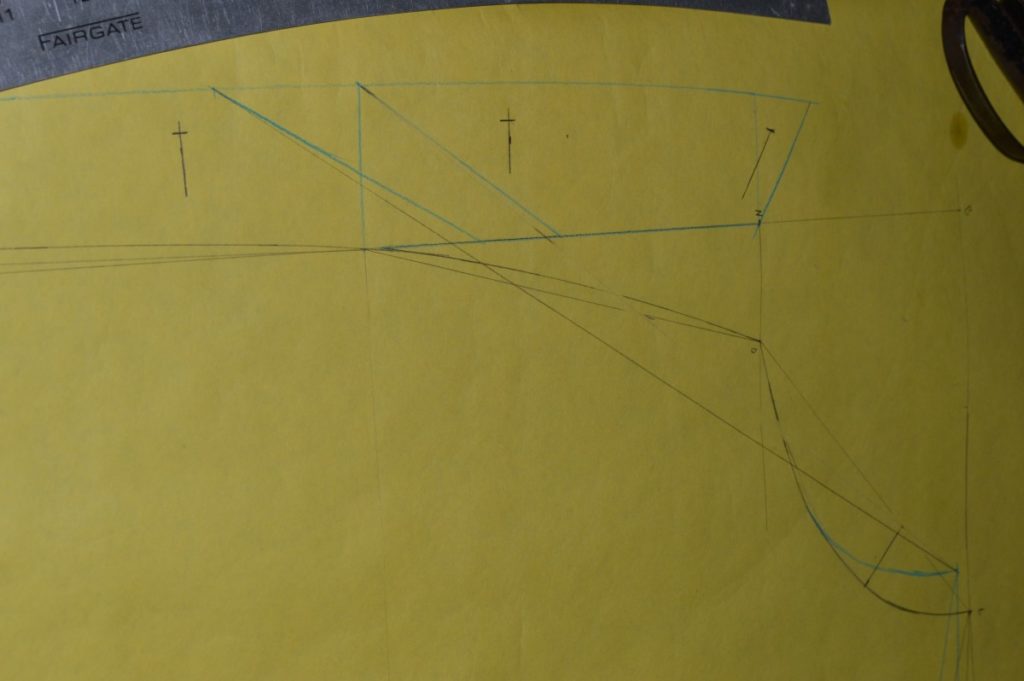
The triangular skirt piece.
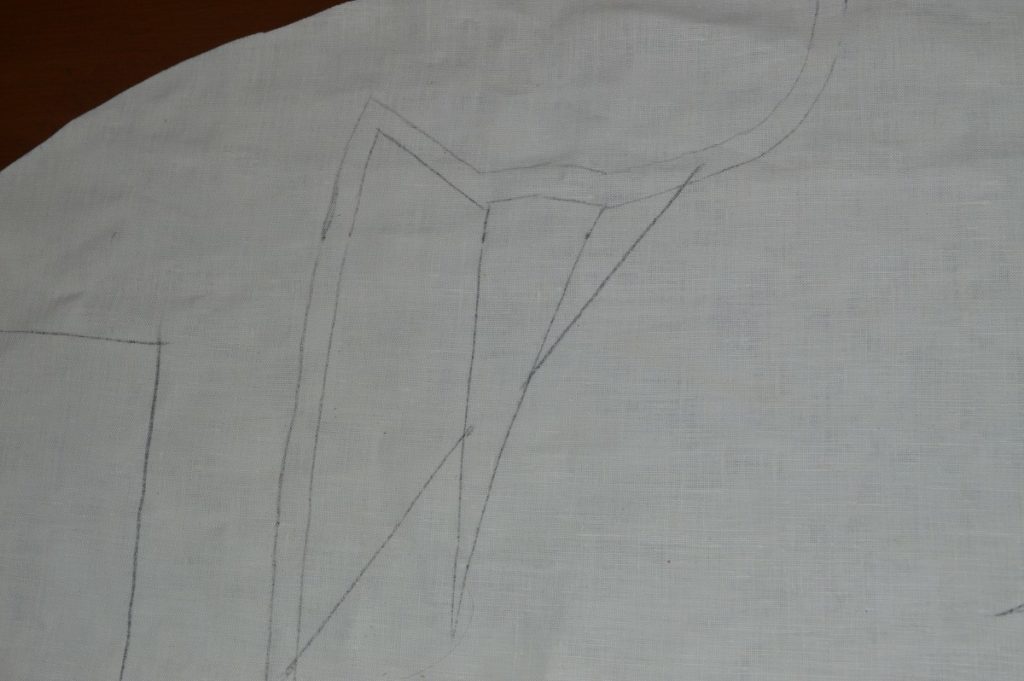
The back, forepart, skirt piece, and side body.
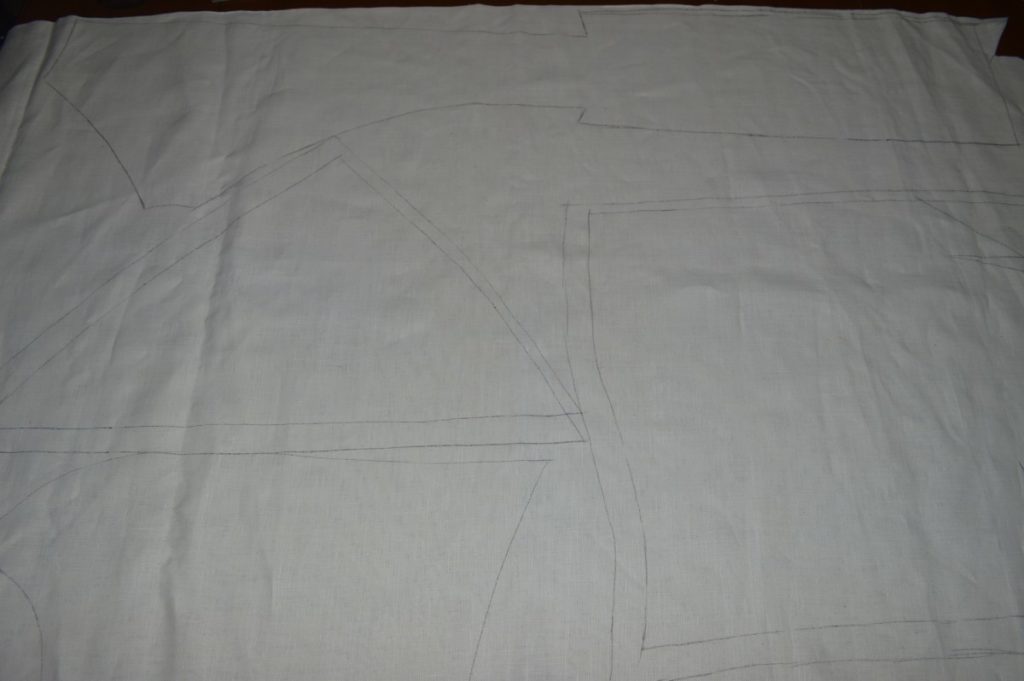
An artsy shot of the armscye dart.
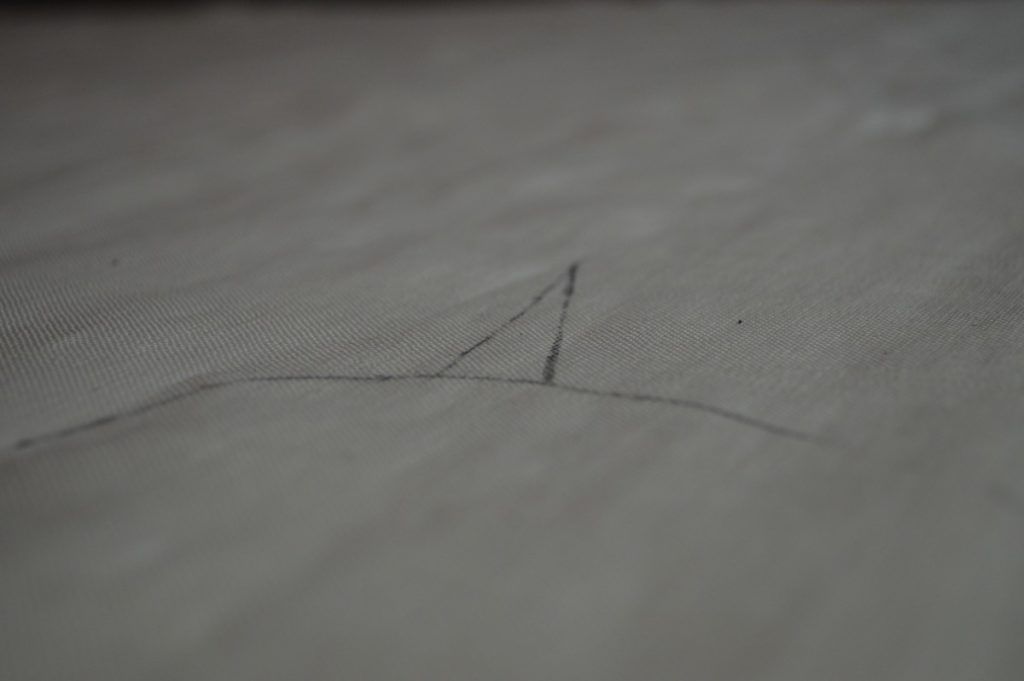
Cutting
Cut around each of your pieces, keeping your scissors on the inside of the chalkline. As the chalk leaves a fairly wide line, it’s important to cut on the inside to ensure the pieces are the exact size that you drafted.
Note that while the darts are cut out of the pattern pieces, they are simply drawn on the fabric, and not cut out. This leaves you with an accurate line with which to sew the darts later. I just draw a chalk line above the darts to make sure I don’t forget this.
Keep the two halves of each piece together.
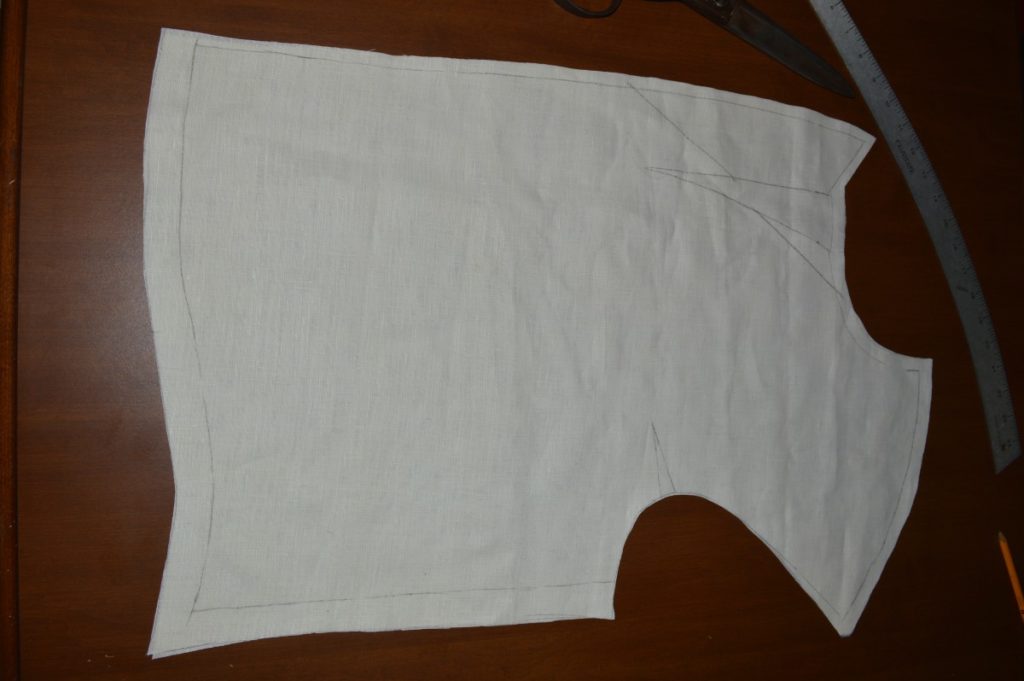
Seam Allowances
Since this is an unlined frock coat, an extra 1/4″ allowance needs to be added to each seam allowance we’d normally include, to leave room for folding and felling the finished seam. Where Devere includes a seam allowance in the draft, only 1/4″ is added.
Forepart
On the forepart, add a 1/4″ inch seam along the center front, neck, shoulder, and armscye. Add a 1/2″ seam allowance along the side and waistline. Note that there is no seam allowance added for the darts. Rather they are cut out directly on the lines drafted.
Side Body
On the side body, add a 1/4″ seam allowance along the armscye. Add a 1/2″ seam allowance along the rear seam, waist, and side seam.
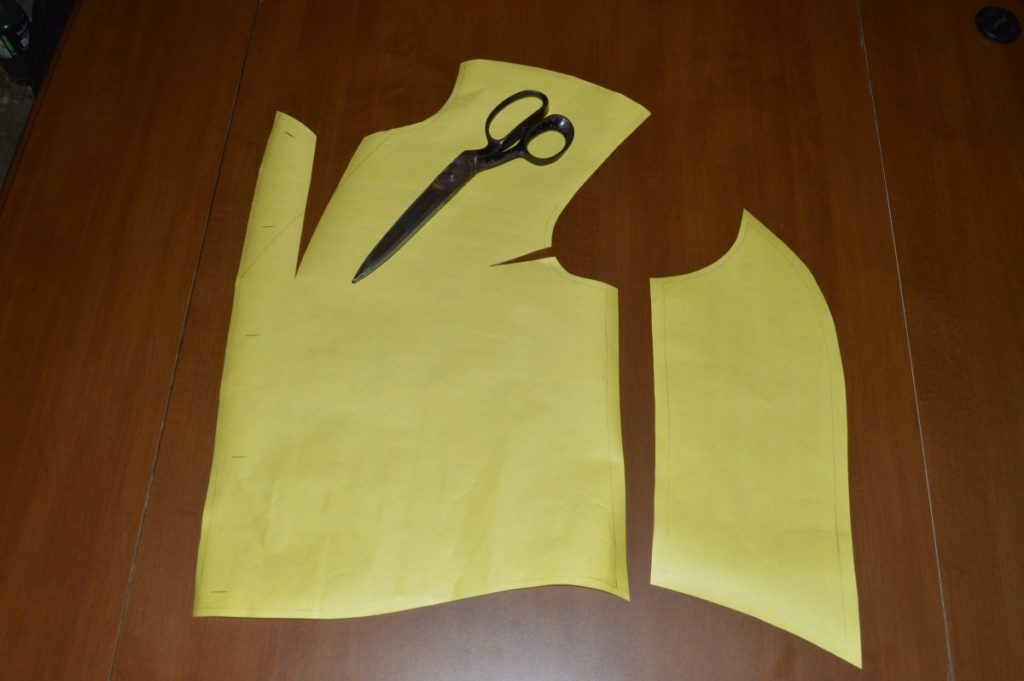
Back
On the back, add a 1/4″ seam allowance along the small bit of armscye, shoulder, and neck. The center back and side seam each get a 1/2″ allowance.
On the back skirts, add a 1/4″ seam along each of the ‘steps’ and down the sides, and at the very bottom, add a 1/2″ seam allowance.
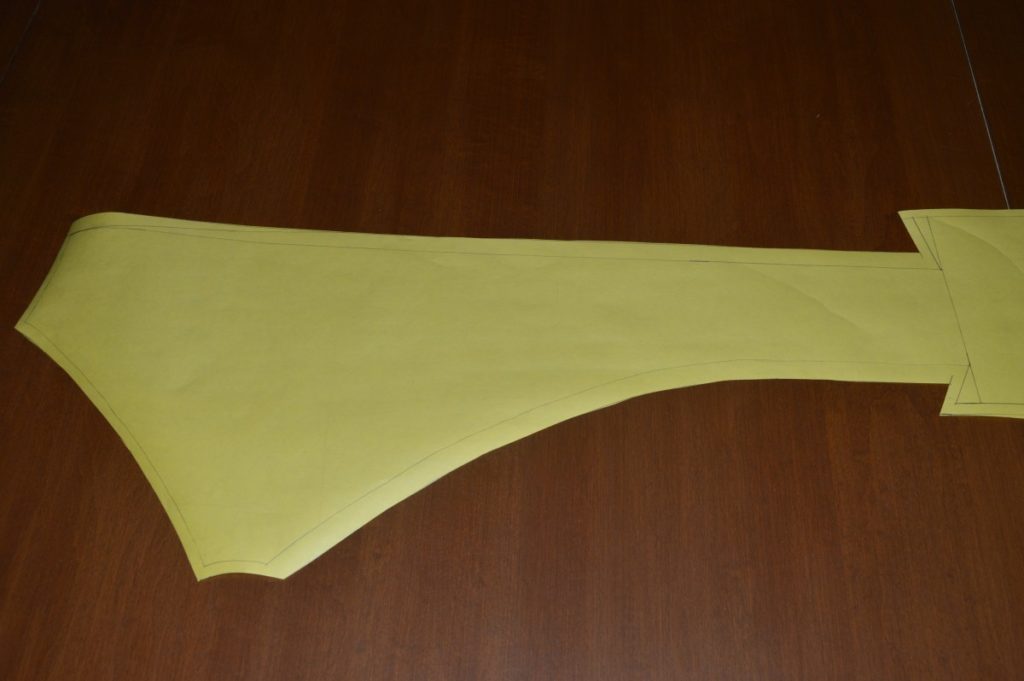
The Skirt
For the skirt, I add 1/2″ seam allowance along the waist and the bottom of the skirt. On the back seam, add 1/4″ to match up with the tails on the back. On the front of the skirt, I tend to go overboard and add a two inch allowance just in case. I remember one time that after fitting, the skirt was too small and I had to cut a new one, wasting precious fabric in the process.
Cut out the darts directly on the lines.
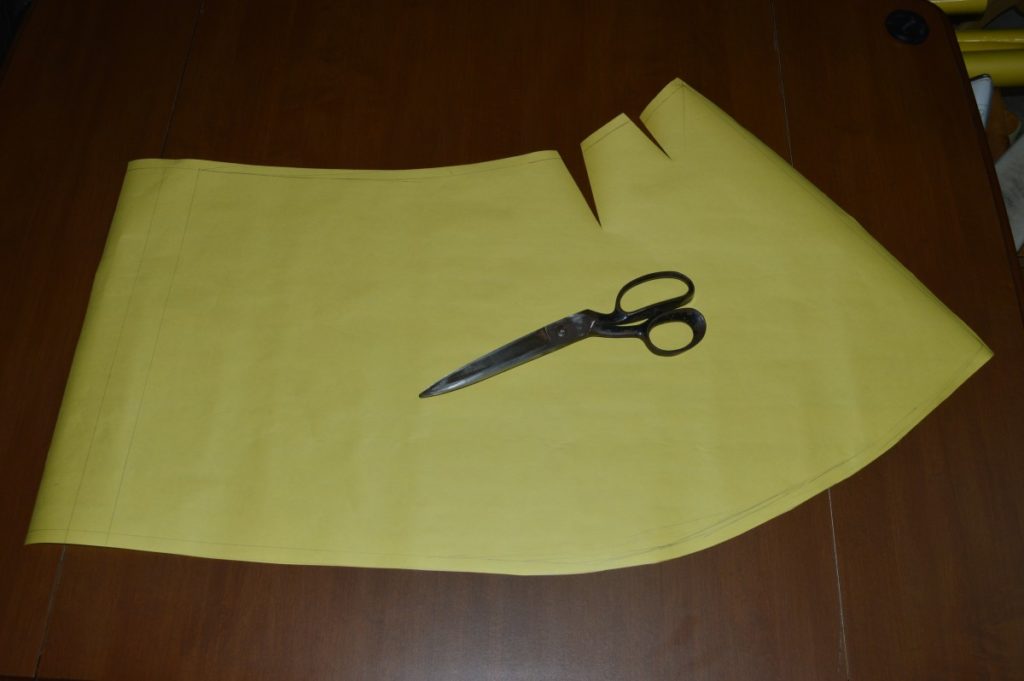
Pattern Adjustments
Here is my basic bodice pattern. This was drafted straight off measurements I had taken of myself, which is not recommended, but it should work for me! The one area I’m not entirely happy with is the armscye, which looks a bit too high. I’ll adjust that later, after a fitting.
We’ll begin this class on constructing a summer frock coat with the basic coat draft, of which you should have fitted at least the bodice already. The next step is to convert the pattern into a single-breasted version and straighten the shoulder, accounting for the fact that linen or cotton does not take to ironwork. Since these steps are already explained in detail in the frock drafting class, I’ll just give a basic overview of what I did.

The first addition to the pattern is to add the grown-on lapel, indicated in blue. I curved inwards very slightly near the bottom to take off a small excess of fabric and make the fit better.
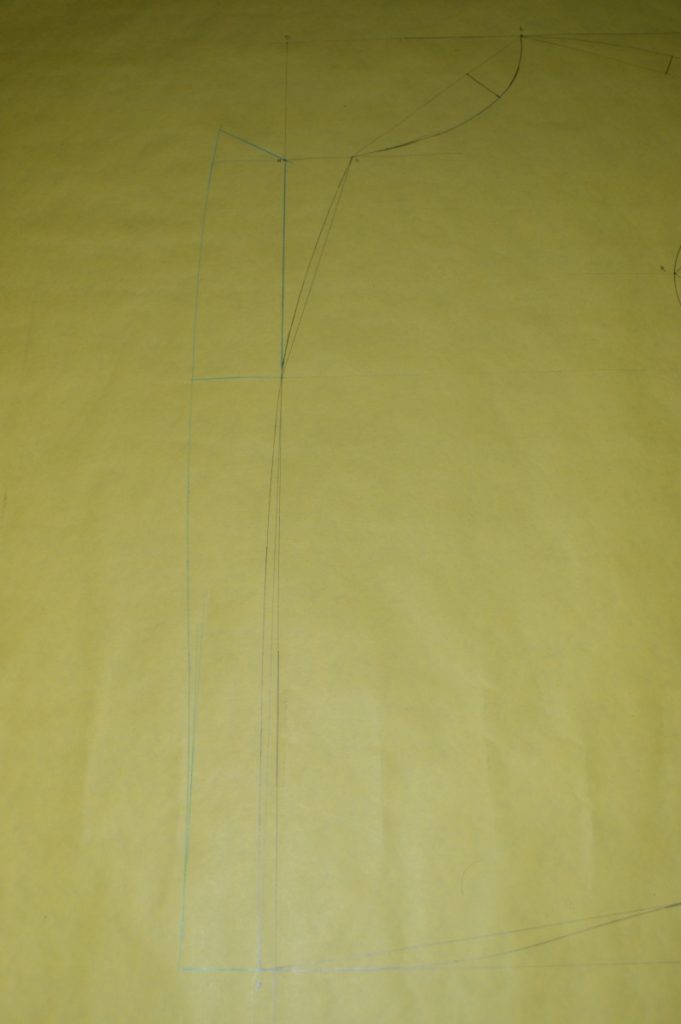
At the top of the lapel, I angled upwards to create the point of the lapel – it looks to be about 30 degrees, but it’s entirely up to you and the style you are reproducing.
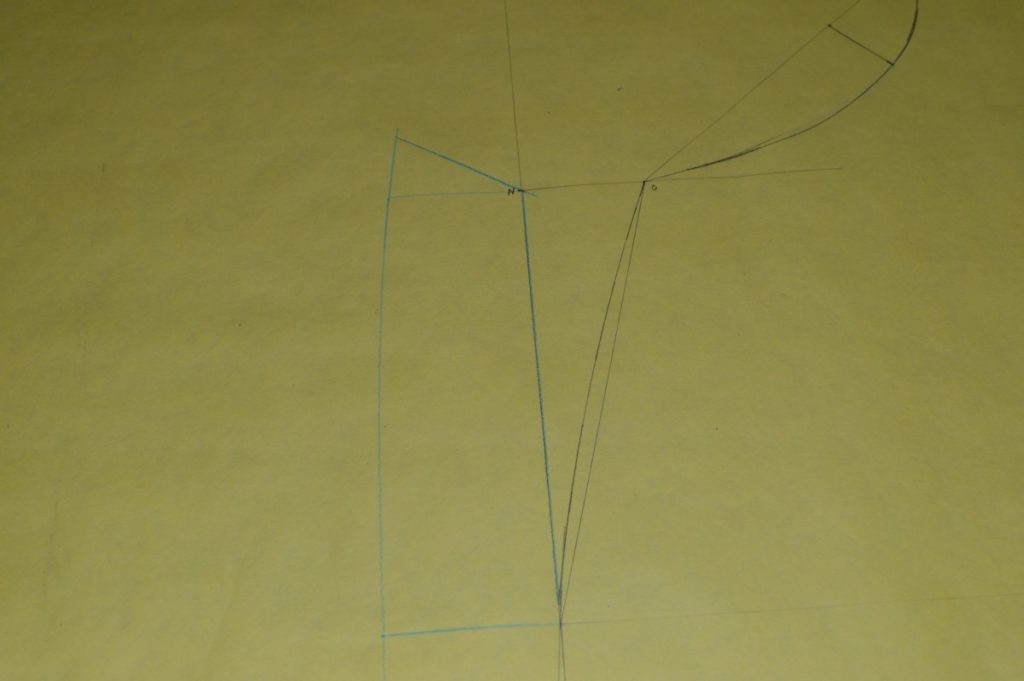
The space between the lapel and the coat front will form the lapel dart.
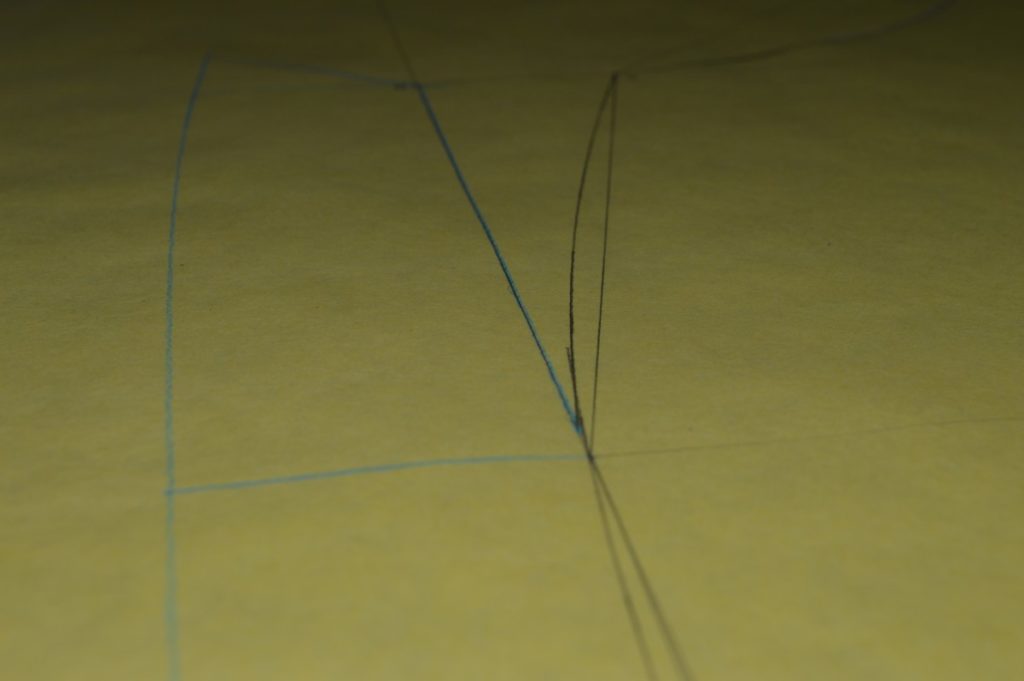
The fabrics we are using in this coat cannot appropriately be shaped with the iron as wool can, so we have to make adjustments to account for this. The first of these is straightening the shoulder by about 3/4″ and lowering the front shoulder point by about 1/4″.
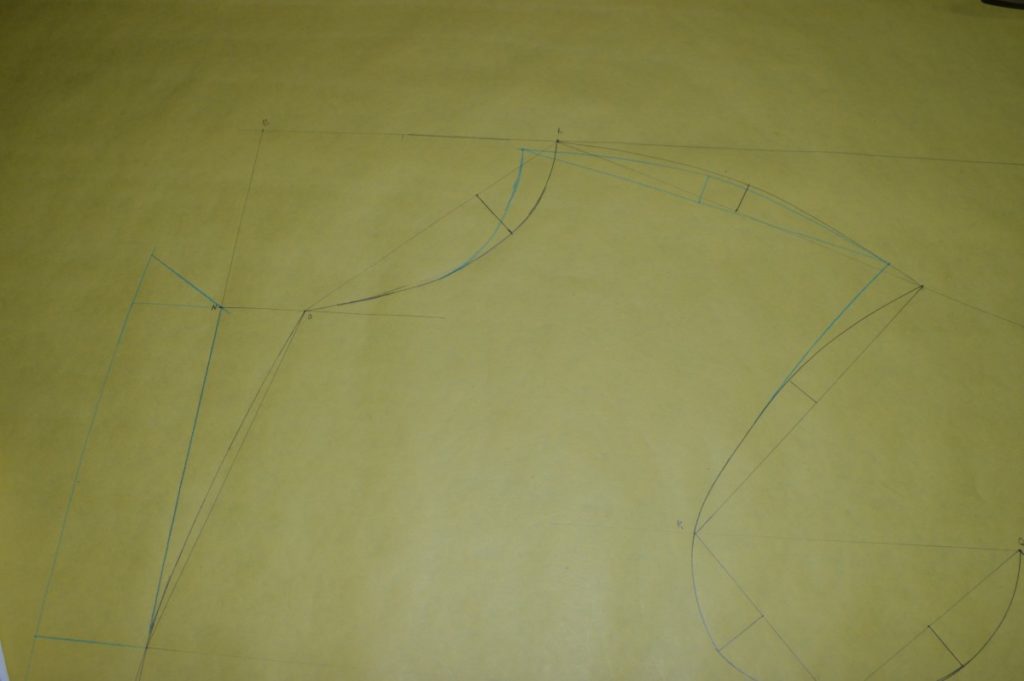
The easiest way to do this is by redrawing all of the construction lines in coloured pencil, and then redrawing the curves.
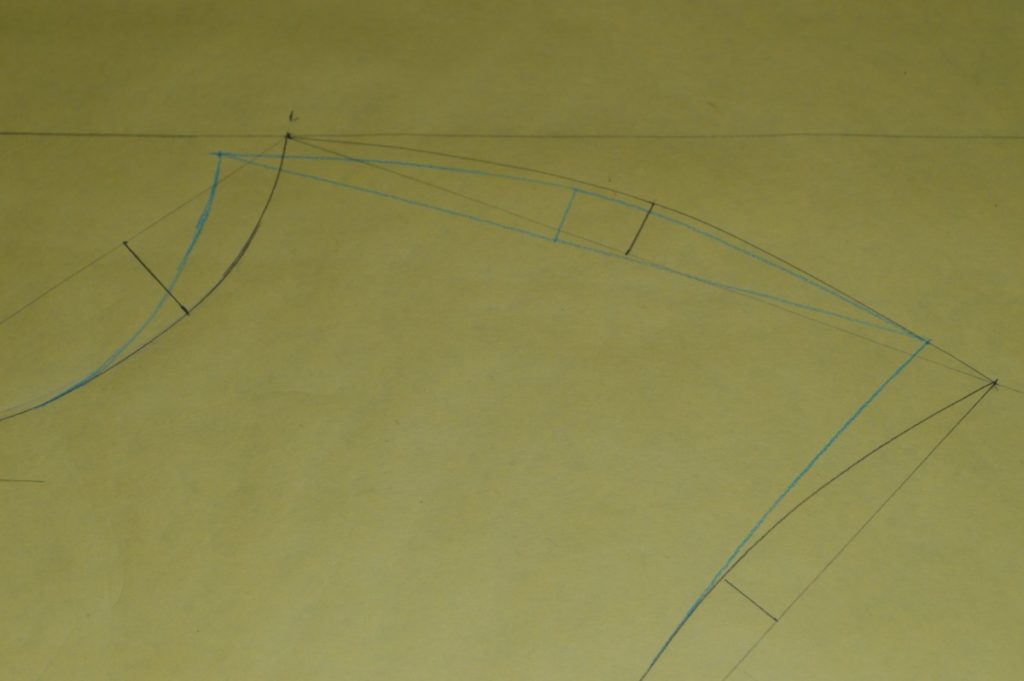
We’ve moved the shoulder forward, but now we need to give it some shape by inserting an armscye dart. This dart is 3/8 to 1/2 inches in width, and is formed by first drawing a line perpendicular to the armscye (as close as you can get it, anyway). I made mine about 2 inches long, but it’ll vary depending on your size and the shape you want.
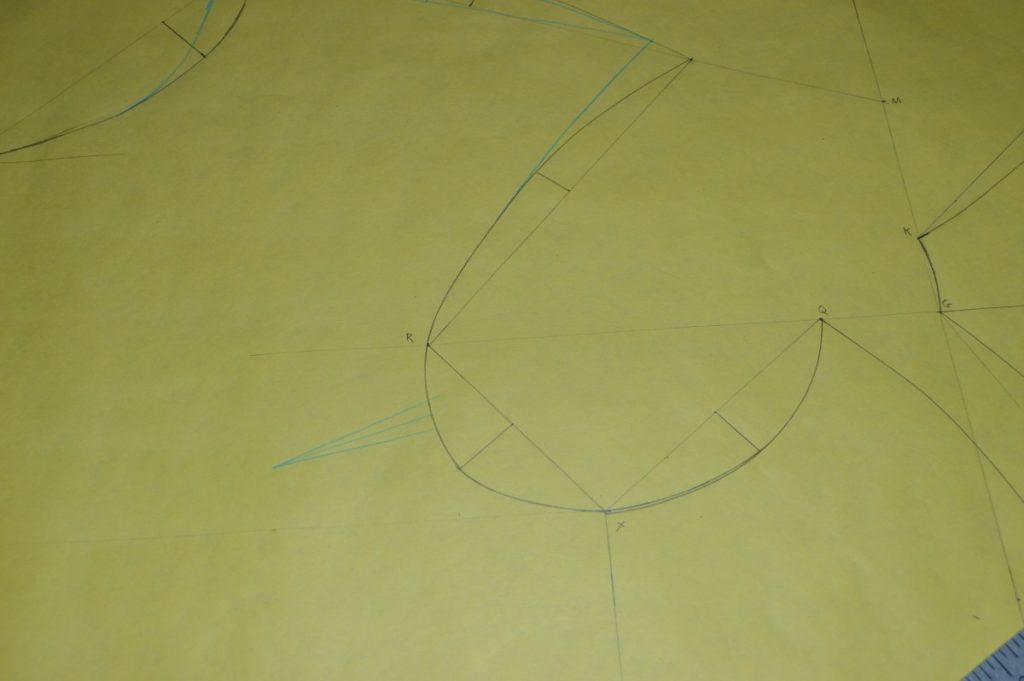
Measure out about 1/4″ (or 3/16″) on either side of the line at the armscye and connect to the point of the dart.
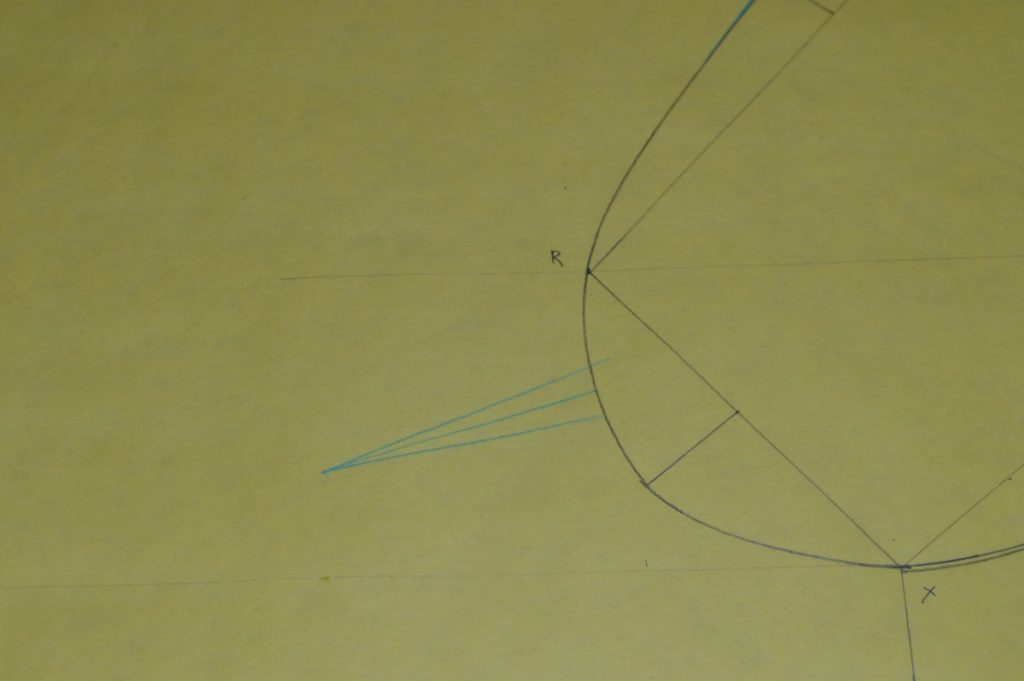
Next I ‘sprang out’ the bottom of the side seam about 3/4″ to make room for the hip bone. I did the same to the rear of the side body, and lowered the seam about 3/4″ to make it 3/8″ longer than the corresponding seam on the back. This will make construction much easier.
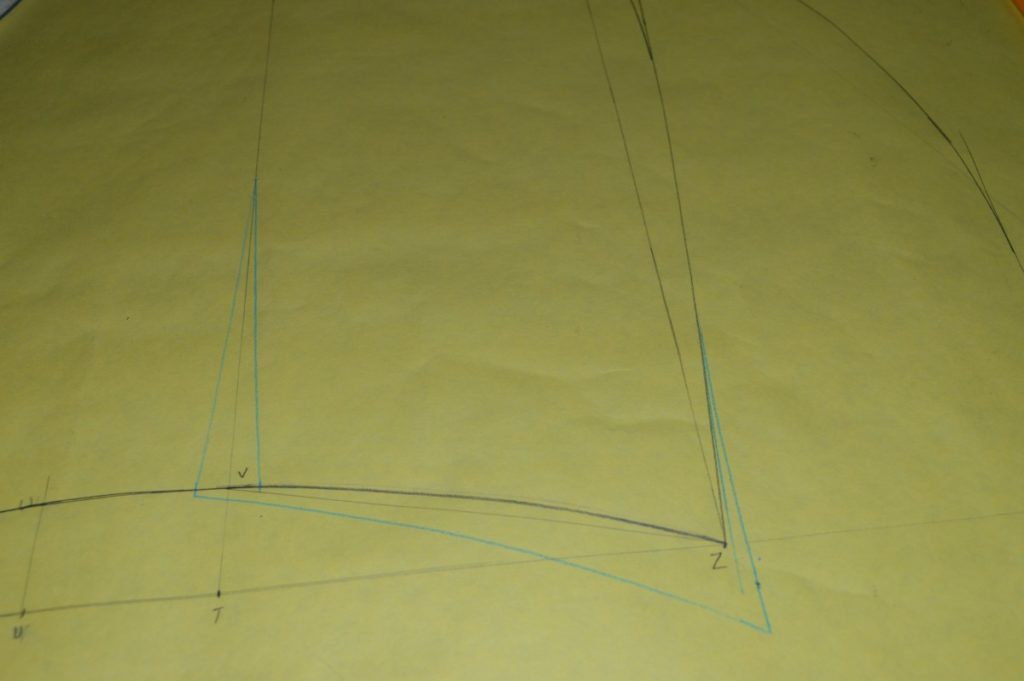
Back on the lapel, I marked the location of the buttons. In my case, I wanted 5 button front, which I spaced out evenly using my tailor’s square. The distance between the top and bottom button happened to be 20″ exactly, so it was a simple matter of spacing the buttons 5 inches apart. The bottom button should be about half an inch from the bottom, as having a buttonhole in the seam may be difficult with all of the folded seams that will be in the area. The top button is 1/2″ from the top and parallel to the lapel point.
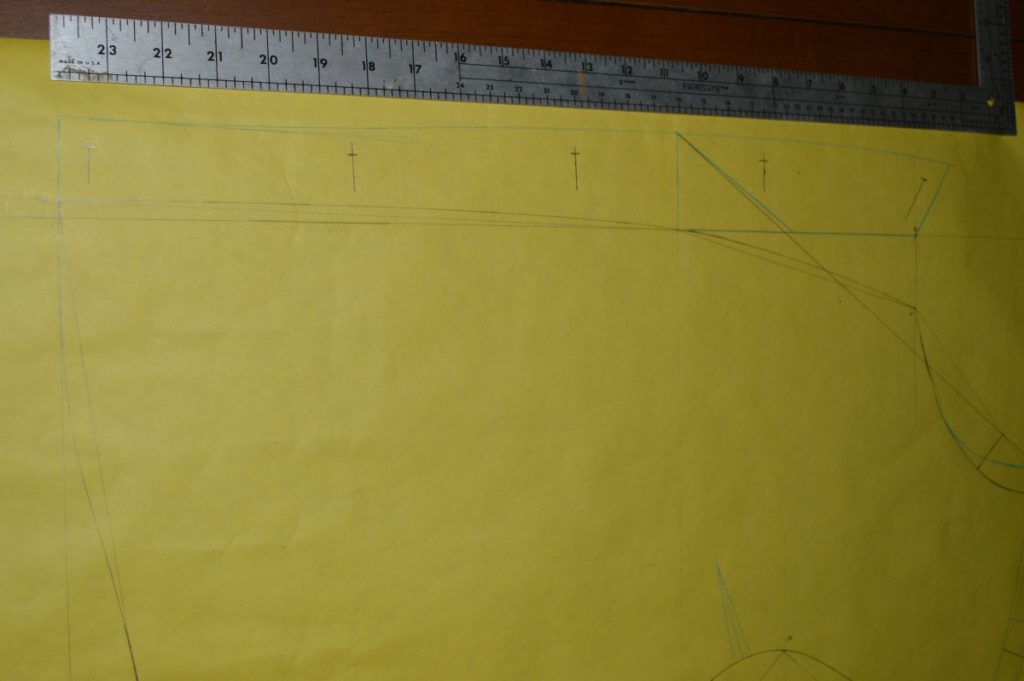
If you look carefully you can see a mistake! Notice the position of the roll line? The lower end should begin at 1/2″ above a buttonhole. Also note that the roll line is offset by 1/4″ on the lapel, indicated by the two lines. When the lapel dart is sewn, the lines will magically line up. Here it is all fixed:

Skirt Adjustments
On the skirt, depending upon the fullness, it’s a good idea to incorporate one or two darts, especially as you won’t be able to shrink the fullness in with the iron. I typically measure the waist seem of the bodice and side body, and compare that to the waist seam on the skirt – the difference is how much you should take out in darts. If it’s over an inch, spread it out over two darts, one slightly larger than the other.
I first lined up the side body with the edge of the skirt to find my placement for the first dart. Ideally, this dart will be in line with the side seam when all is said and done. This one was 3/4″ wide at the top and about 4″ in length.

Centered between the first dart and the back of the skirt, I placed the second dart, which was 1/2″ in width and 2 1/2″ in length. These of course will vary according to your measurements and needs.
